Quick filters:
Eris myth Stock Photos and Images
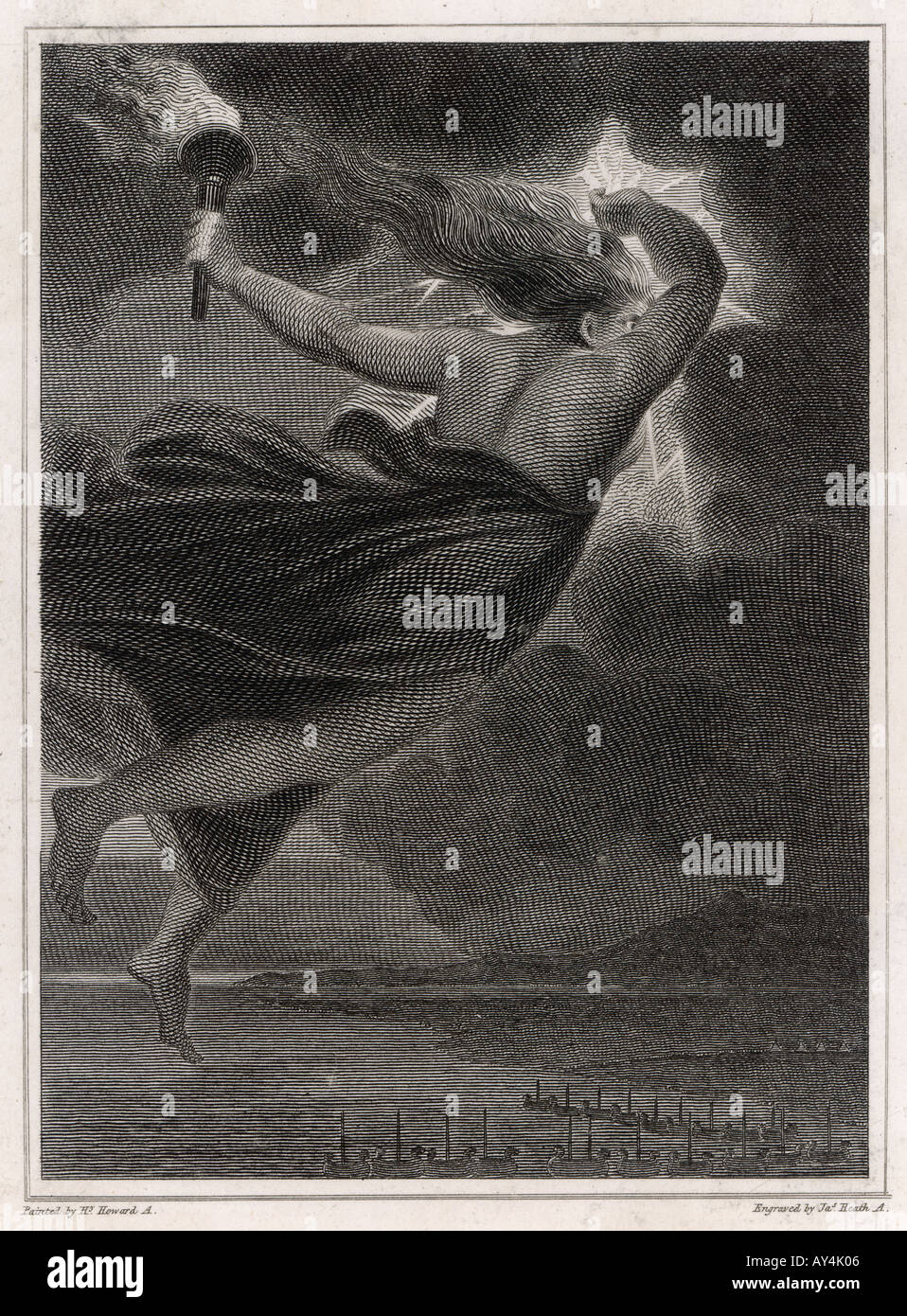 Eris Brings Discord Stock Photohttps://www.alamy.com/image-license-details/?v=1https://www.alamy.com/eris-brings-discord-image5546757.html
Eris Brings Discord Stock Photohttps://www.alamy.com/image-license-details/?v=1https://www.alamy.com/eris-brings-discord-image5546757.htmlRMAY4K06–Eris Brings Discord
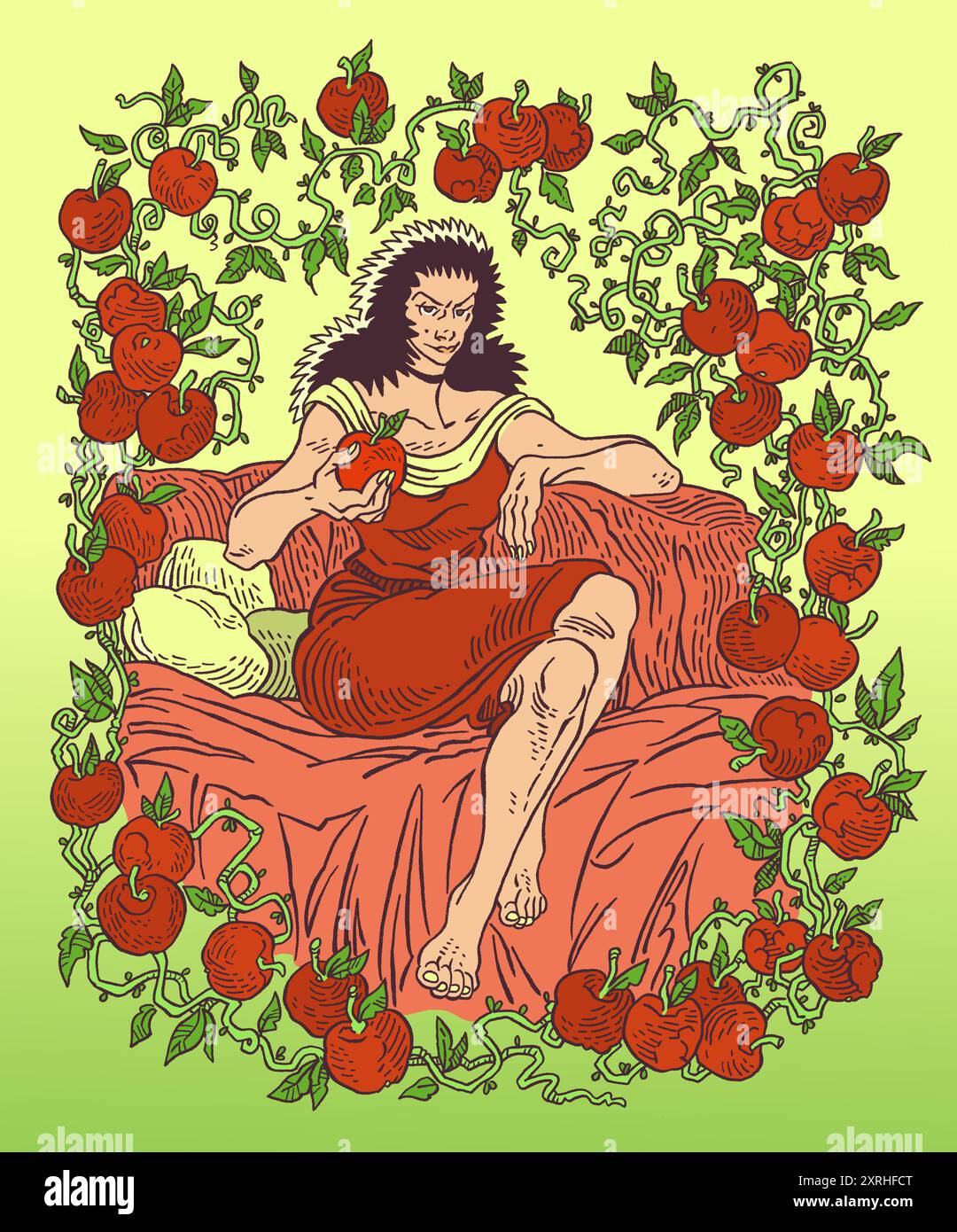 Illustration of the greek ancient goddess Eris, seating, with the apple of the discord and chaos, reason of the trojan war. Hand drawn doodle. Stock Photohttps://www.alamy.com/image-license-details/?v=1https://www.alamy.com/illustration-of-the-greek-ancient-goddess-eris-seating-with-the-apple-of-the-discord-and-chaos-reason-of-the-trojan-war-hand-drawn-doodle-image616885272.html
Illustration of the greek ancient goddess Eris, seating, with the apple of the discord and chaos, reason of the trojan war. Hand drawn doodle. Stock Photohttps://www.alamy.com/image-license-details/?v=1https://www.alamy.com/illustration-of-the-greek-ancient-goddess-eris-seating-with-the-apple-of-the-discord-and-chaos-reason-of-the-trojan-war-hand-drawn-doodle-image616885272.htmlRF2XRHFCT–Illustration of the greek ancient goddess Eris, seating, with the apple of the discord and chaos, reason of the trojan war. Hand drawn doodle.
 Zeus sends Eris, with the Torch of Discord, to stir up enmity between the Greeks and Trojans and make them eager to kill one another Stock Photohttps://www.alamy.com/image-license-details/?v=1https://www.alamy.com/stock-photo-zeus-sends-eris-with-the-torch-of-discord-to-stir-up-enmity-between-105290943.html
Zeus sends Eris, with the Torch of Discord, to stir up enmity between the Greeks and Trojans and make them eager to kill one another Stock Photohttps://www.alamy.com/image-license-details/?v=1https://www.alamy.com/stock-photo-zeus-sends-eris-with-the-torch-of-discord-to-stir-up-enmity-between-105290943.htmlRMG38BJR–Zeus sends Eris, with the Torch of Discord, to stir up enmity between the Greeks and Trojans and make them eager to kill one another
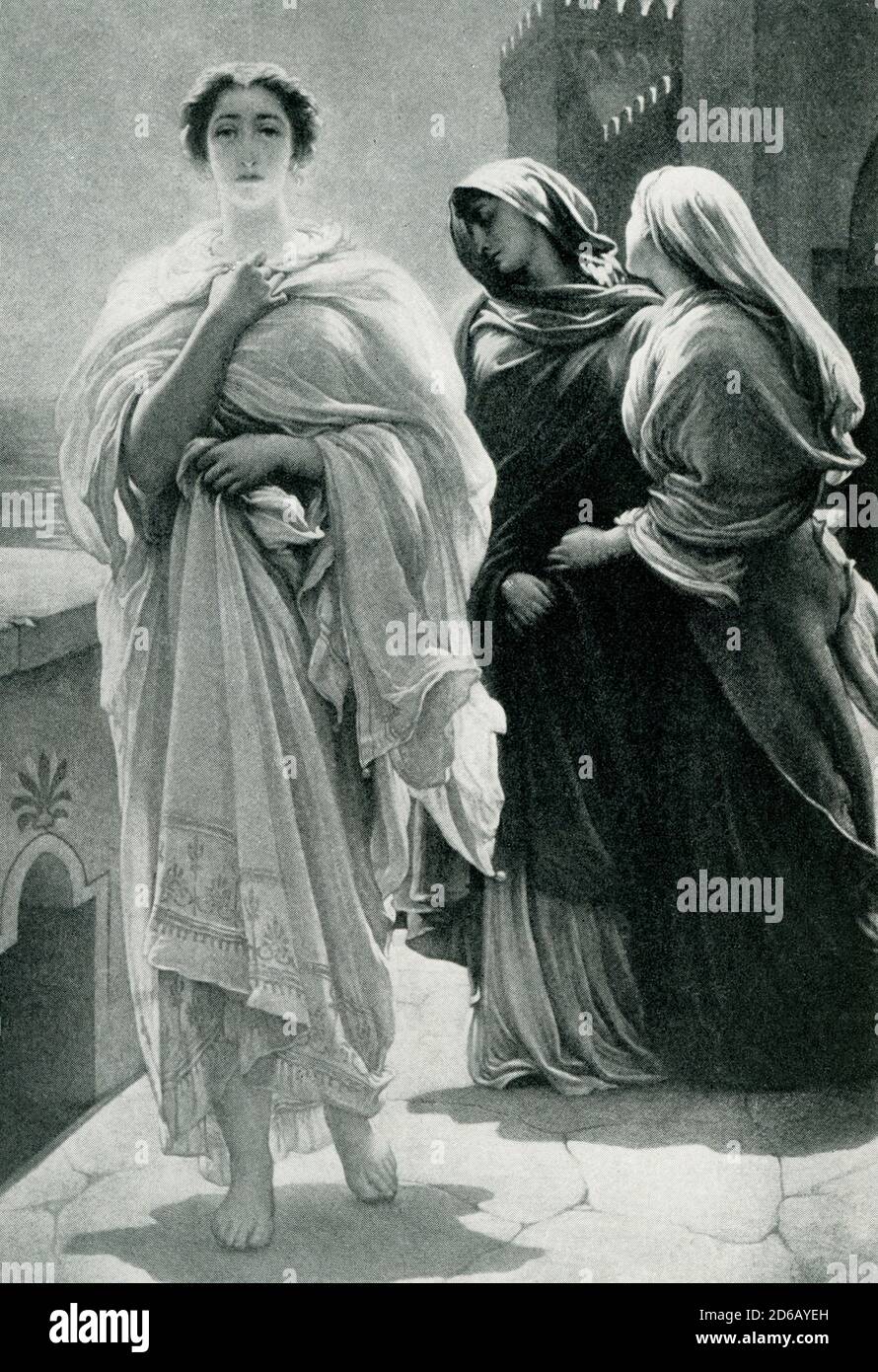 This painting by Frederic Leighton shows Helen of Troy attended by her handmaidens. In Greek legend, Paris was a Trojan prince, the son of Priam and Hecuba. When Eris, the Greek goddess of discord, was not invited to the marriage of the Greek leader Achilles, she threw a golden apple into the festivities, with the words 'for the fairest' written on it. The goddesses Hera, Aphrodite, and Athena each claimed the apple, and Zeus, the king of the gods, had Paris choose which one should get it. Hermes, the messenger god, acts as a guide, arranging the meeting between the goddesses and Paris. Aphrod Stock Photohttps://www.alamy.com/image-license-details/?v=1https://www.alamy.com/this-painting-by-frederic-leighton-shows-helen-of-troy-attended-by-her-handmaidens-in-greek-legend-paris-was-a-trojan-prince-the-son-of-priam-and-hecuba-when-eris-the-greek-goddess-of-discord-was-not-invited-to-the-marriage-of-the-greek-leader-achilles-she-threw-a-golden-apple-into-the-festivities-with-the-words-for-the-fairest-written-on-it-the-goddesses-hera-aphrodite-and-athena-each-claimed-the-apple-and-zeus-the-king-of-the-gods-had-paris-choose-which-one-should-get-it-hermes-the-messenger-god-acts-as-a-guide-arranging-the-meeting-between-the-goddesses-and-paris-aphrod-image382557129.html
This painting by Frederic Leighton shows Helen of Troy attended by her handmaidens. In Greek legend, Paris was a Trojan prince, the son of Priam and Hecuba. When Eris, the Greek goddess of discord, was not invited to the marriage of the Greek leader Achilles, she threw a golden apple into the festivities, with the words 'for the fairest' written on it. The goddesses Hera, Aphrodite, and Athena each claimed the apple, and Zeus, the king of the gods, had Paris choose which one should get it. Hermes, the messenger god, acts as a guide, arranging the meeting between the goddesses and Paris. Aphrod Stock Photohttps://www.alamy.com/image-license-details/?v=1https://www.alamy.com/this-painting-by-frederic-leighton-shows-helen-of-troy-attended-by-her-handmaidens-in-greek-legend-paris-was-a-trojan-prince-the-son-of-priam-and-hecuba-when-eris-the-greek-goddess-of-discord-was-not-invited-to-the-marriage-of-the-greek-leader-achilles-she-threw-a-golden-apple-into-the-festivities-with-the-words-for-the-fairest-written-on-it-the-goddesses-hera-aphrodite-and-athena-each-claimed-the-apple-and-zeus-the-king-of-the-gods-had-paris-choose-which-one-should-get-it-hermes-the-messenger-god-acts-as-a-guide-arranging-the-meeting-between-the-goddesses-and-paris-aphrod-image382557129.htmlRF2D6AYEH–This painting by Frederic Leighton shows Helen of Troy attended by her handmaidens. In Greek legend, Paris was a Trojan prince, the son of Priam and Hecuba. When Eris, the Greek goddess of discord, was not invited to the marriage of the Greek leader Achilles, she threw a golden apple into the festivities, with the words 'for the fairest' written on it. The goddesses Hera, Aphrodite, and Athena each claimed the apple, and Zeus, the king of the gods, had Paris choose which one should get it. Hermes, the messenger god, acts as a guide, arranging the meeting between the goddesses and Paris. Aphrod
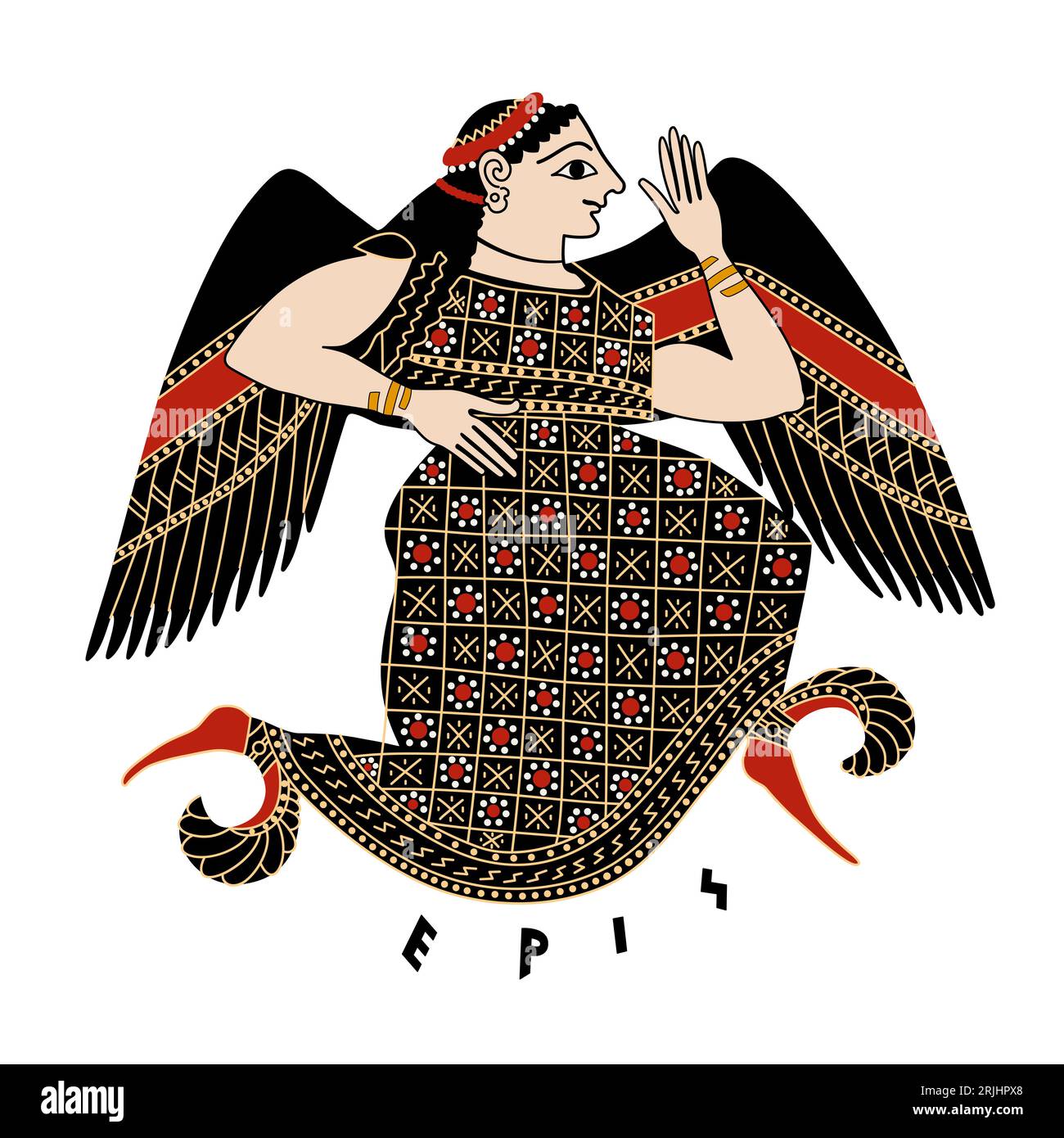 Eris, Greek goddess of discord, tossed the Apple of Discord intended for the most beautiful one, provoking the goddesses to begin quarreling. Stock Photohttps://www.alamy.com/image-license-details/?v=1https://www.alamy.com/eris-greek-goddess-of-discord-tossed-the-apple-of-discord-intended-for-the-most-beautiful-one-provoking-the-goddesses-to-begin-quarreling-image562186752.html
Eris, Greek goddess of discord, tossed the Apple of Discord intended for the most beautiful one, provoking the goddesses to begin quarreling. Stock Photohttps://www.alamy.com/image-license-details/?v=1https://www.alamy.com/eris-greek-goddess-of-discord-tossed-the-apple-of-discord-intended-for-the-most-beautiful-one-provoking-the-goddesses-to-begin-quarreling-image562186752.htmlRF2RJHPX8–Eris, Greek goddess of discord, tossed the Apple of Discord intended for the most beautiful one, provoking the goddesses to begin quarreling.
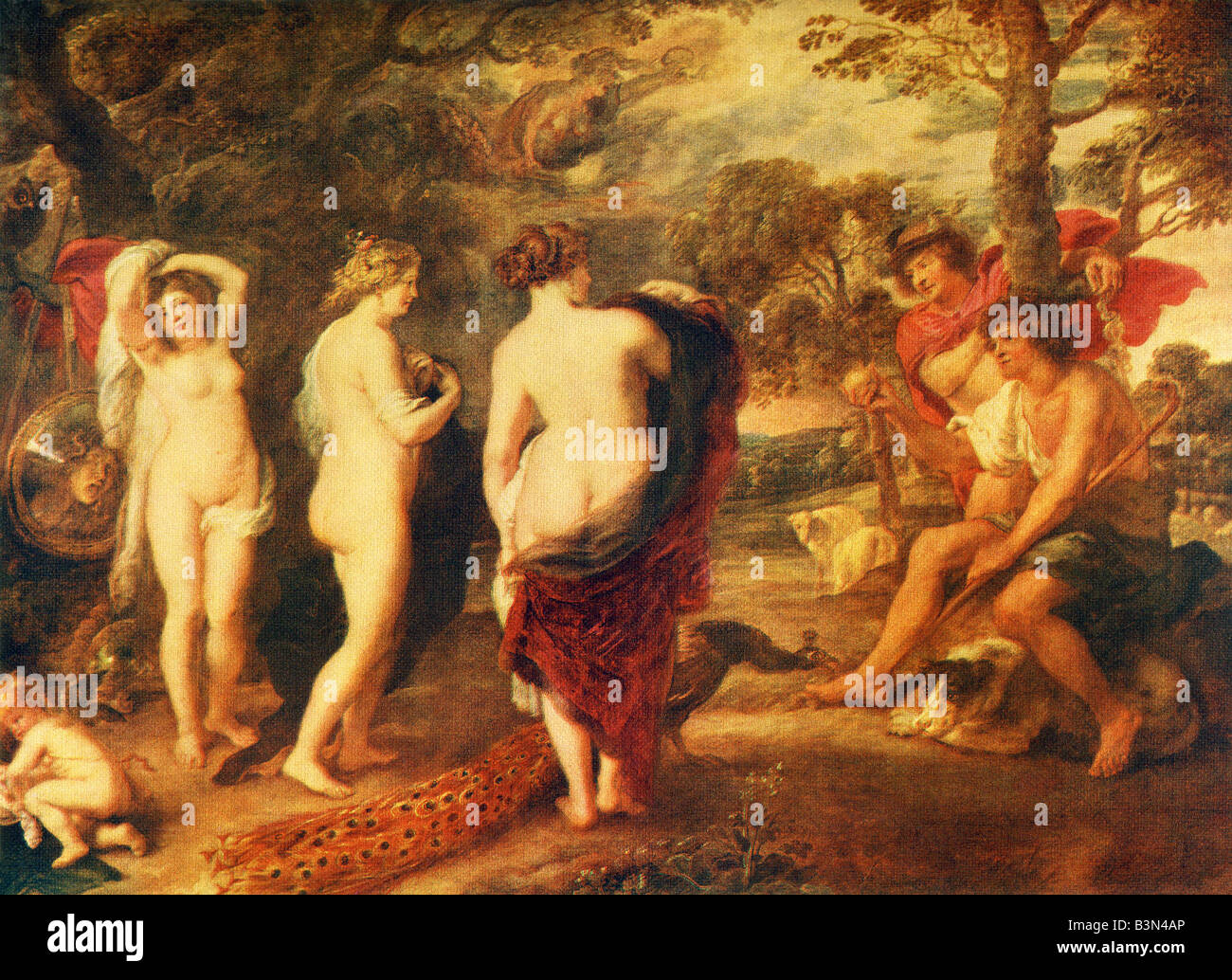 Judgment of Paris Stock Photohttps://www.alamy.com/image-license-details/?v=1https://www.alamy.com/stock-photo-judgment-of-paris-19518766.html
Judgment of Paris Stock Photohttps://www.alamy.com/image-license-details/?v=1https://www.alamy.com/stock-photo-judgment-of-paris-19518766.htmlRFB3N4AP–Judgment of Paris
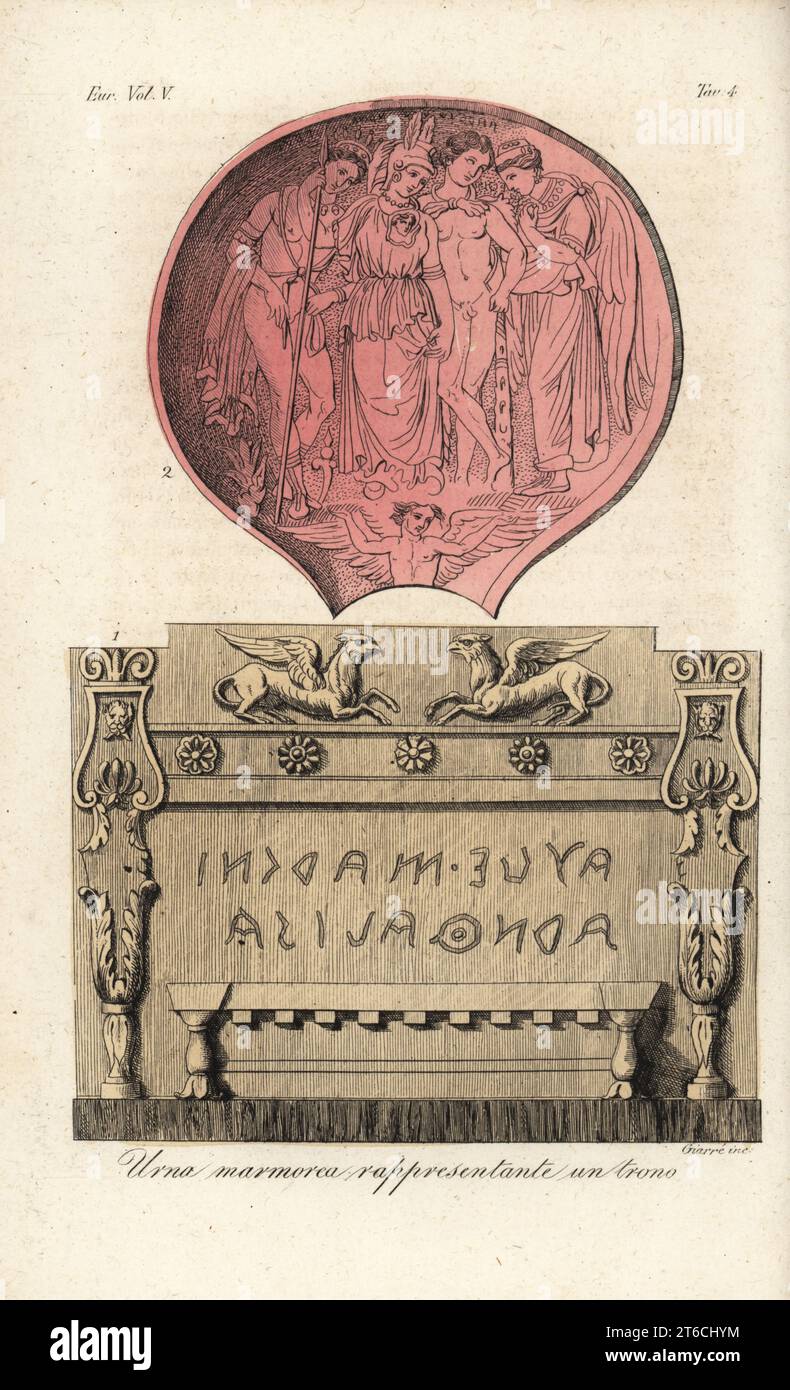 Ancient Etruscan marble urn showing a regal throne 1, and Etruscan mirror depicting Eris, Menrfa in helmet, Hercules with club and lionskin, and Thetis 2. Urna marmorea rappresentante un trono. Handcoloured copperplate engraving by Giarre from Giulio Ferrarios Costumes Ancient and Modern of the Peoples of the World, Il Costume Antico e Moderno, Florence, 1843. Stock Photohttps://www.alamy.com/image-license-details/?v=1https://www.alamy.com/ancient-etruscan-marble-urn-showing-a-regal-throne-1-and-etruscan-mirror-depicting-eris-menrfa-in-helmet-hercules-with-club-and-lionskin-and-thetis-2-urna-marmorea-rappresentante-un-trono-handcoloured-copperplate-engraving-by-giarre-from-giulio-ferrarios-costumes-ancient-and-modern-of-the-peoples-of-the-world-il-costume-antico-e-moderno-florence-1843-image571907608.html
Ancient Etruscan marble urn showing a regal throne 1, and Etruscan mirror depicting Eris, Menrfa in helmet, Hercules with club and lionskin, and Thetis 2. Urna marmorea rappresentante un trono. Handcoloured copperplate engraving by Giarre from Giulio Ferrarios Costumes Ancient and Modern of the Peoples of the World, Il Costume Antico e Moderno, Florence, 1843. Stock Photohttps://www.alamy.com/image-license-details/?v=1https://www.alamy.com/ancient-etruscan-marble-urn-showing-a-regal-throne-1-and-etruscan-mirror-depicting-eris-menrfa-in-helmet-hercules-with-club-and-lionskin-and-thetis-2-urna-marmorea-rappresentante-un-trono-handcoloured-copperplate-engraving-by-giarre-from-giulio-ferrarios-costumes-ancient-and-modern-of-the-peoples-of-the-world-il-costume-antico-e-moderno-florence-1843-image571907608.htmlRM2T6CHYM–Ancient Etruscan marble urn showing a regal throne 1, and Etruscan mirror depicting Eris, Menrfa in helmet, Hercules with club and lionskin, and Thetis 2. Urna marmorea rappresentante un trono. Handcoloured copperplate engraving by Giarre from Giulio Ferrarios Costumes Ancient and Modern of the Peoples of the World, Il Costume Antico e Moderno, Florence, 1843.
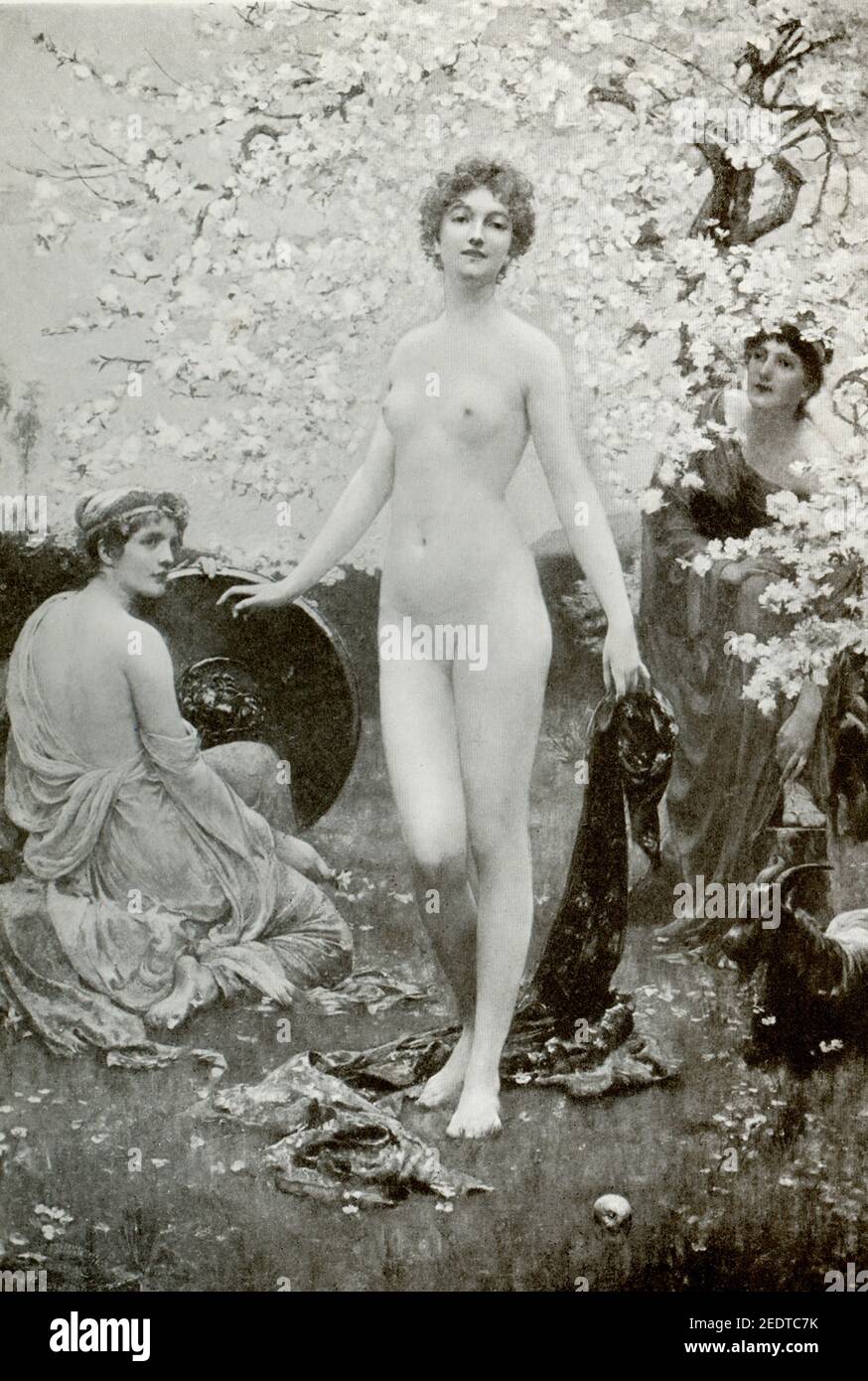 This image shows the Judgement of Paris by the artist Solomon J Solomon. In Greek legend, Paris was a Trojan prince, the son of Priam and Hecuba. When Eris, the Greek goddess of discord, was not invited to the marriage of the Greek leader Achilles, she threw a golden apple into the festivities, with the words 'for the fairest' written on it. The goddesses Hera, Aphrodite, and Athena each claimed the apple, and Zeus, the king of the gods, had Paris choose which one should get it. Hermes, the messenger god, acts as a guide, arranging the meeting between the goddesses and Paris. Aphrodite promise Stock Photohttps://www.alamy.com/image-license-details/?v=1https://www.alamy.com/this-image-shows-the-judgement-of-paris-by-the-artist-solomon-j-solomon-in-greek-legend-paris-was-a-trojan-prince-the-son-of-priam-and-hecuba-when-eris-the-greek-goddess-of-discord-was-not-invited-to-the-marriage-of-the-greek-leader-achilles-she-threw-a-golden-apple-into-the-festivities-with-the-words-for-the-fairest-written-on-it-the-goddesses-hera-aphrodite-and-athena-each-claimed-the-apple-and-zeus-the-king-of-the-gods-had-paris-choose-which-one-should-get-it-hermes-the-messenger-god-acts-as-a-guide-arranging-the-meeting-between-the-goddesses-and-paris-aphrodite-promise-image404365463.html
This image shows the Judgement of Paris by the artist Solomon J Solomon. In Greek legend, Paris was a Trojan prince, the son of Priam and Hecuba. When Eris, the Greek goddess of discord, was not invited to the marriage of the Greek leader Achilles, she threw a golden apple into the festivities, with the words 'for the fairest' written on it. The goddesses Hera, Aphrodite, and Athena each claimed the apple, and Zeus, the king of the gods, had Paris choose which one should get it. Hermes, the messenger god, acts as a guide, arranging the meeting between the goddesses and Paris. Aphrodite promise Stock Photohttps://www.alamy.com/image-license-details/?v=1https://www.alamy.com/this-image-shows-the-judgement-of-paris-by-the-artist-solomon-j-solomon-in-greek-legend-paris-was-a-trojan-prince-the-son-of-priam-and-hecuba-when-eris-the-greek-goddess-of-discord-was-not-invited-to-the-marriage-of-the-greek-leader-achilles-she-threw-a-golden-apple-into-the-festivities-with-the-words-for-the-fairest-written-on-it-the-goddesses-hera-aphrodite-and-athena-each-claimed-the-apple-and-zeus-the-king-of-the-gods-had-paris-choose-which-one-should-get-it-hermes-the-messenger-god-acts-as-a-guide-arranging-the-meeting-between-the-goddesses-and-paris-aphrodite-promise-image404365463.htmlRF2EDTC7K–This image shows the Judgement of Paris by the artist Solomon J Solomon. In Greek legend, Paris was a Trojan prince, the son of Priam and Hecuba. When Eris, the Greek goddess of discord, was not invited to the marriage of the Greek leader Achilles, she threw a golden apple into the festivities, with the words 'for the fairest' written on it. The goddesses Hera, Aphrodite, and Athena each claimed the apple, and Zeus, the king of the gods, had Paris choose which one should get it. Hermes, the messenger god, acts as a guide, arranging the meeting between the goddesses and Paris. Aphrodite promise
 Ancient Etruscan marble urn showing a regal throne 1, and Etruscan mirror depicting Eris, Menrfa in helmet, Hercules with club and lionskin, and Thetis 2. Urna marmorea rappresentante un trono. Handcoloured copperplate engraving by Giarre from Giulio Ferrario’s Costumes Ancient and Modern of the Peoples of the World, Il Costume Antico e Moderno, Florence, 1843. Stock Photohttps://www.alamy.com/image-license-details/?v=1https://www.alamy.com/ancient-etruscan-marble-urn-showing-a-regal-throne-1-and-etruscan-mirror-depicting-eris-menrfa-in-helmet-hercules-with-club-and-lionskin-and-thetis-2-urna-marmorea-rappresentante-un-trono-handcoloured-copperplate-engraving-by-giarre-from-giulio-ferrarios-costumes-ancient-and-modern-of-the-peoples-of-the-world-il-costume-antico-e-moderno-florence-1843-image341456517.html
Ancient Etruscan marble urn showing a regal throne 1, and Etruscan mirror depicting Eris, Menrfa in helmet, Hercules with club and lionskin, and Thetis 2. Urna marmorea rappresentante un trono. Handcoloured copperplate engraving by Giarre from Giulio Ferrario’s Costumes Ancient and Modern of the Peoples of the World, Il Costume Antico e Moderno, Florence, 1843. Stock Photohttps://www.alamy.com/image-license-details/?v=1https://www.alamy.com/ancient-etruscan-marble-urn-showing-a-regal-throne-1-and-etruscan-mirror-depicting-eris-menrfa-in-helmet-hercules-with-club-and-lionskin-and-thetis-2-urna-marmorea-rappresentante-un-trono-handcoloured-copperplate-engraving-by-giarre-from-giulio-ferrarios-costumes-ancient-and-modern-of-the-peoples-of-the-world-il-costume-antico-e-moderno-florence-1843-image341456517.htmlRM2AREK7H–Ancient Etruscan marble urn showing a regal throne 1, and Etruscan mirror depicting Eris, Menrfa in helmet, Hercules with club and lionskin, and Thetis 2. Urna marmorea rappresentante un trono. Handcoloured copperplate engraving by Giarre from Giulio Ferrario’s Costumes Ancient and Modern of the Peoples of the World, Il Costume Antico e Moderno, Florence, 1843.
 Bellevue, WA USA - circa March 2022: Angled view of the interior of the Bungie offices in the downtown area. Stock Photohttps://www.alamy.com/image-license-details/?v=1https://www.alamy.com/bellevue-wa-usa-circa-march-2022-angled-view-of-the-interior-of-the-bungie-offices-in-the-downtown-area-image471619857.html
Bellevue, WA USA - circa March 2022: Angled view of the interior of the Bungie offices in the downtown area. Stock Photohttps://www.alamy.com/image-license-details/?v=1https://www.alamy.com/bellevue-wa-usa-circa-march-2022-angled-view-of-the-interior-of-the-bungie-offices-in-the-downtown-area-image471619857.htmlRF2JB83X9–Bellevue, WA USA - circa March 2022: Angled view of the interior of the Bungie offices in the downtown area.
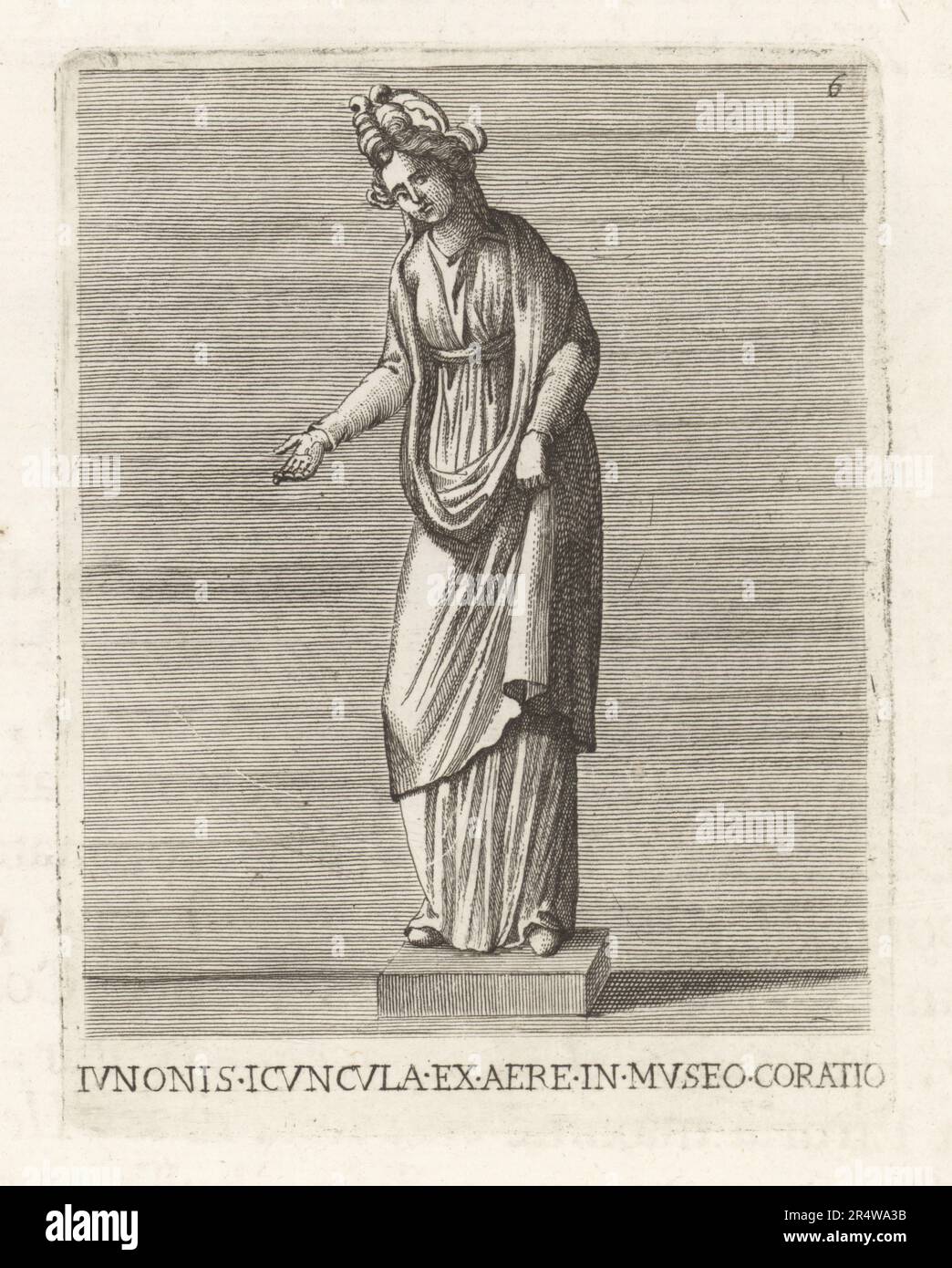 Bronze figure of a goddess in diadem and robe, found in the villa of Tadeus Orselli of Cortona. Possibly Roman Juno, in Etruscan religion Uni or Eris, goddess of marriage, fertility, family. Phoenician Astarte, Greek Hera. Iunonis Icuncula ex aere in Museo Coratio. Copperplate engraving from Francesco Valesio, Antonio Gori and Ridolfino Venuti’s Academia Etrusca, Museum Cortonense in quo Vetera Monumenta, (Etruscan Academy or Museum of Cortona), Faustus Amideus, Rome, 1750. Stock Photohttps://www.alamy.com/image-license-details/?v=1https://www.alamy.com/bronze-figure-of-a-goddess-in-diadem-and-robe-found-in-the-villa-of-tadeus-orselli-of-cortona-possibly-roman-juno-in-etruscan-religion-uni-or-eris-goddess-of-marriage-fertility-family-phoenician-astarte-greek-hera-iunonis-icuncula-ex-aere-in-museo-coratio-copperplate-engraving-from-francesco-valesio-antonio-gori-and-ridolfino-venutis-academia-etrusca-museum-cortonense-in-quo-vetera-monumenta-etruscan-academy-or-museum-of-cortona-faustus-amideus-rome-1750-image553747135.html
Bronze figure of a goddess in diadem and robe, found in the villa of Tadeus Orselli of Cortona. Possibly Roman Juno, in Etruscan religion Uni or Eris, goddess of marriage, fertility, family. Phoenician Astarte, Greek Hera. Iunonis Icuncula ex aere in Museo Coratio. Copperplate engraving from Francesco Valesio, Antonio Gori and Ridolfino Venuti’s Academia Etrusca, Museum Cortonense in quo Vetera Monumenta, (Etruscan Academy or Museum of Cortona), Faustus Amideus, Rome, 1750. Stock Photohttps://www.alamy.com/image-license-details/?v=1https://www.alamy.com/bronze-figure-of-a-goddess-in-diadem-and-robe-found-in-the-villa-of-tadeus-orselli-of-cortona-possibly-roman-juno-in-etruscan-religion-uni-or-eris-goddess-of-marriage-fertility-family-phoenician-astarte-greek-hera-iunonis-icuncula-ex-aere-in-museo-coratio-copperplate-engraving-from-francesco-valesio-antonio-gori-and-ridolfino-venutis-academia-etrusca-museum-cortonense-in-quo-vetera-monumenta-etruscan-academy-or-museum-of-cortona-faustus-amideus-rome-1750-image553747135.htmlRM2R4WA3B–Bronze figure of a goddess in diadem and robe, found in the villa of Tadeus Orselli of Cortona. Possibly Roman Juno, in Etruscan religion Uni or Eris, goddess of marriage, fertility, family. Phoenician Astarte, Greek Hera. Iunonis Icuncula ex aere in Museo Coratio. Copperplate engraving from Francesco Valesio, Antonio Gori and Ridolfino Venuti’s Academia Etrusca, Museum Cortonense in quo Vetera Monumenta, (Etruscan Academy or Museum of Cortona), Faustus Amideus, Rome, 1750.
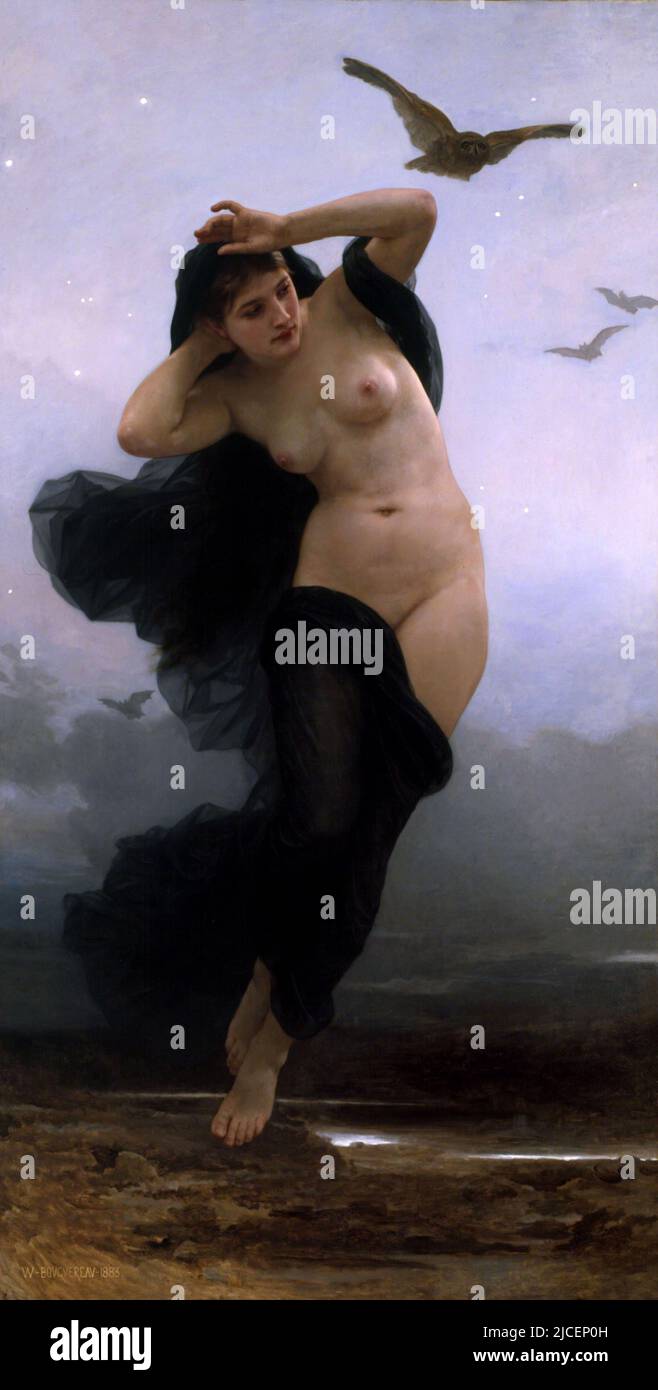 A portrait of Nyx (The Night) by William-Adolphe Bouguereau (1825-1905). In Greek mythology Nyx was one of the primordial godesses created from Chaos. She mates with Erebus (Darkness) to give birth to Aether (LIght) and Hemera (Day). Later she gives birth to Moros (Doom, Destiny), the Keres (Destruction, Death), Thanatos (Death), Hypnos (Sleep), the Oneiroi (Dreams), Momus (Blame), Oizys (Pain, Distress), the Hesperides, the Moirai (Fates), Nemesis (Indignation, Retribution), Apate (Deceit), Philotes (Friendship), Geras (Old Age), and Eris (Strife) Stock Photohttps://www.alamy.com/image-license-details/?v=1https://www.alamy.com/a-portrait-of-nyx-the-night-by-william-adolphe-bouguereau-1825-1905-in-greek-mythology-nyx-was-one-of-the-primordial-godesses-created-from-chaos-she-mates-with-erebus-darkness-to-give-birth-to-aether-light-and-hemera-day-later-she-gives-birth-to-moros-doom-destiny-the-keres-destruction-death-thanatos-death-hypnos-sleep-the-oneiroi-dreams-momus-blame-oizys-pain-distress-the-hesperides-the-moirai-fates-nemesis-indignation-retribution-apate-deceit-philotes-friendship-geras-old-age-and-eris-strife-image472380401.html
A portrait of Nyx (The Night) by William-Adolphe Bouguereau (1825-1905). In Greek mythology Nyx was one of the primordial godesses created from Chaos. She mates with Erebus (Darkness) to give birth to Aether (LIght) and Hemera (Day). Later she gives birth to Moros (Doom, Destiny), the Keres (Destruction, Death), Thanatos (Death), Hypnos (Sleep), the Oneiroi (Dreams), Momus (Blame), Oizys (Pain, Distress), the Hesperides, the Moirai (Fates), Nemesis (Indignation, Retribution), Apate (Deceit), Philotes (Friendship), Geras (Old Age), and Eris (Strife) Stock Photohttps://www.alamy.com/image-license-details/?v=1https://www.alamy.com/a-portrait-of-nyx-the-night-by-william-adolphe-bouguereau-1825-1905-in-greek-mythology-nyx-was-one-of-the-primordial-godesses-created-from-chaos-she-mates-with-erebus-darkness-to-give-birth-to-aether-light-and-hemera-day-later-she-gives-birth-to-moros-doom-destiny-the-keres-destruction-death-thanatos-death-hypnos-sleep-the-oneiroi-dreams-momus-blame-oizys-pain-distress-the-hesperides-the-moirai-fates-nemesis-indignation-retribution-apate-deceit-philotes-friendship-geras-old-age-and-eris-strife-image472380401.htmlRM2JCEP0H–A portrait of Nyx (The Night) by William-Adolphe Bouguereau (1825-1905). In Greek mythology Nyx was one of the primordial godesses created from Chaos. She mates with Erebus (Darkness) to give birth to Aether (LIght) and Hemera (Day). Later she gives birth to Moros (Doom, Destiny), the Keres (Destruction, Death), Thanatos (Death), Hypnos (Sleep), the Oneiroi (Dreams), Momus (Blame), Oizys (Pain, Distress), the Hesperides, the Moirai (Fates), Nemesis (Indignation, Retribution), Apate (Deceit), Philotes (Friendship), Geras (Old Age), and Eris (Strife)
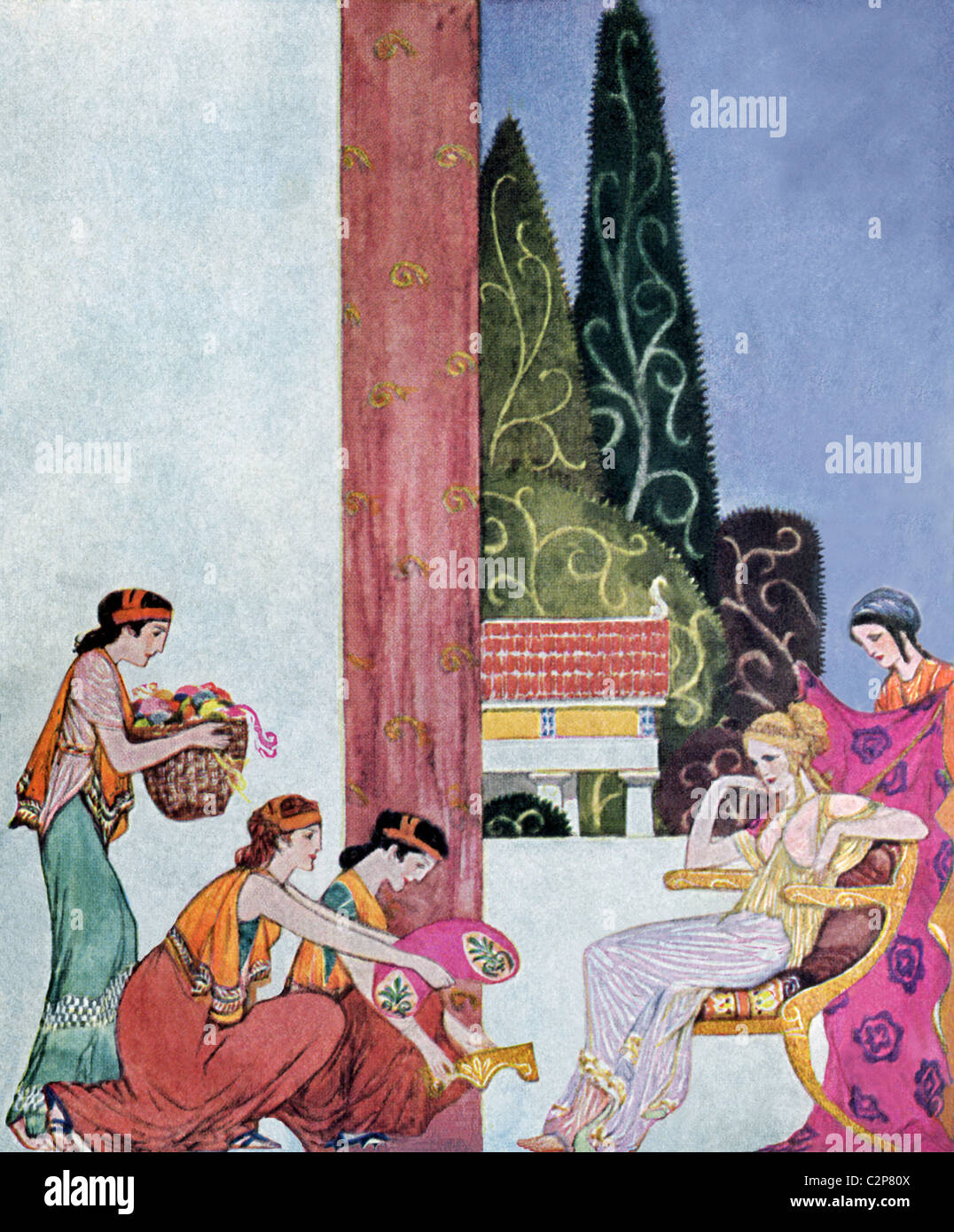 Helen was the queen of Sparta and wife of Menelaus. Prince Paris takes her to Troy. Here, she is attended by her handmaidens. Stock Photohttps://www.alamy.com/image-license-details/?v=1https://www.alamy.com/stock-photo-helen-was-the-queen-of-sparta-and-wife-of-menelaus-prince-paris-takes-36139290.html
Helen was the queen of Sparta and wife of Menelaus. Prince Paris takes her to Troy. Here, she is attended by her handmaidens. Stock Photohttps://www.alamy.com/image-license-details/?v=1https://www.alamy.com/stock-photo-helen-was-the-queen-of-sparta-and-wife-of-menelaus-prince-paris-takes-36139290.htmlRFC2P80X–Helen was the queen of Sparta and wife of Menelaus. Prince Paris takes her to Troy. Here, she is attended by her handmaidens.
 A portrait of Nyx (The Night) by Auguste Raynaud (1854-1937). In Greek mythology Nyx was one of the primordial godesses created from Chaos. She mates with Erebus (Darkness) to give birth to Aether (LIght) and Hemera (Day). Later she gives birth to Moros (Doom, Destiny), the Keres (Destruction, Death), Thanatos (Death), Hypnos (Sleep), the Oneiroi (Dreams), Momus (Blame), Oizys (Pain, Distress), the Hesperides, the Moirai (Fates), Nemesis (Indignation, Retribution), Apate (Deceit), Philotes (Friendship), Geras (Old Age), and Eris (Strife) Stock Photohttps://www.alamy.com/image-license-details/?v=1https://www.alamy.com/a-portrait-of-nyx-the-night-by-auguste-raynaud-1854-1937-in-greek-mythology-nyx-was-one-of-the-primordial-godesses-created-from-chaos-she-mates-with-erebus-darkness-to-give-birth-to-aether-light-and-hemera-day-later-she-gives-birth-to-moros-doom-destiny-the-keres-destruction-death-thanatos-death-hypnos-sleep-the-oneiroi-dreams-momus-blame-oizys-pain-distress-the-hesperides-the-moirai-fates-nemesis-indignation-retribution-apate-deceit-philotes-friendship-geras-old-age-and-eris-strife-image472380346.html
A portrait of Nyx (The Night) by Auguste Raynaud (1854-1937). In Greek mythology Nyx was one of the primordial godesses created from Chaos. She mates with Erebus (Darkness) to give birth to Aether (LIght) and Hemera (Day). Later she gives birth to Moros (Doom, Destiny), the Keres (Destruction, Death), Thanatos (Death), Hypnos (Sleep), the Oneiroi (Dreams), Momus (Blame), Oizys (Pain, Distress), the Hesperides, the Moirai (Fates), Nemesis (Indignation, Retribution), Apate (Deceit), Philotes (Friendship), Geras (Old Age), and Eris (Strife) Stock Photohttps://www.alamy.com/image-license-details/?v=1https://www.alamy.com/a-portrait-of-nyx-the-night-by-auguste-raynaud-1854-1937-in-greek-mythology-nyx-was-one-of-the-primordial-godesses-created-from-chaos-she-mates-with-erebus-darkness-to-give-birth-to-aether-light-and-hemera-day-later-she-gives-birth-to-moros-doom-destiny-the-keres-destruction-death-thanatos-death-hypnos-sleep-the-oneiroi-dreams-momus-blame-oizys-pain-distress-the-hesperides-the-moirai-fates-nemesis-indignation-retribution-apate-deceit-philotes-friendship-geras-old-age-and-eris-strife-image472380346.htmlRM2JCENXJ–A portrait of Nyx (The Night) by Auguste Raynaud (1854-1937). In Greek mythology Nyx was one of the primordial godesses created from Chaos. She mates with Erebus (Darkness) to give birth to Aether (LIght) and Hemera (Day). Later she gives birth to Moros (Doom, Destiny), the Keres (Destruction, Death), Thanatos (Death), Hypnos (Sleep), the Oneiroi (Dreams), Momus (Blame), Oizys (Pain, Distress), the Hesperides, the Moirai (Fates), Nemesis (Indignation, Retribution), Apate (Deceit), Philotes (Friendship), Geras (Old Age), and Eris (Strife)
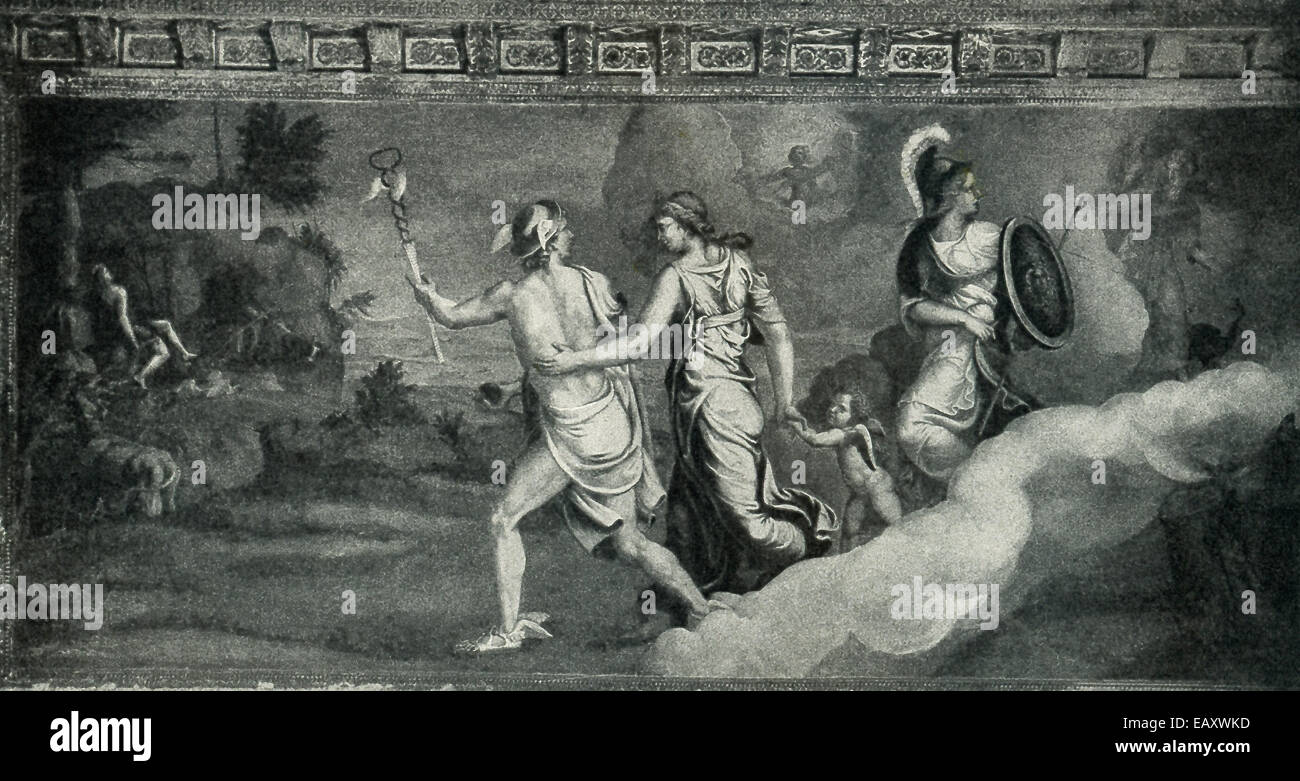 The text that accompanied this illustration reads: To him, at last, the three goddesses entrusted the judgment and the golden apple and the person entrusted is the god Hermes. Stock Photohttps://www.alamy.com/image-license-details/?v=1https://www.alamy.com/stock-photo-the-text-that-accompanied-this-illustration-reads-to-him-at-last-the-75578929.html
The text that accompanied this illustration reads: To him, at last, the three goddesses entrusted the judgment and the golden apple and the person entrusted is the god Hermes. Stock Photohttps://www.alamy.com/image-license-details/?v=1https://www.alamy.com/stock-photo-the-text-that-accompanied-this-illustration-reads-to-him-at-last-the-75578929.htmlRMEAXWKD–The text that accompanied this illustration reads: To him, at last, the three goddesses entrusted the judgment and the golden apple and the person entrusted is the god Hermes.
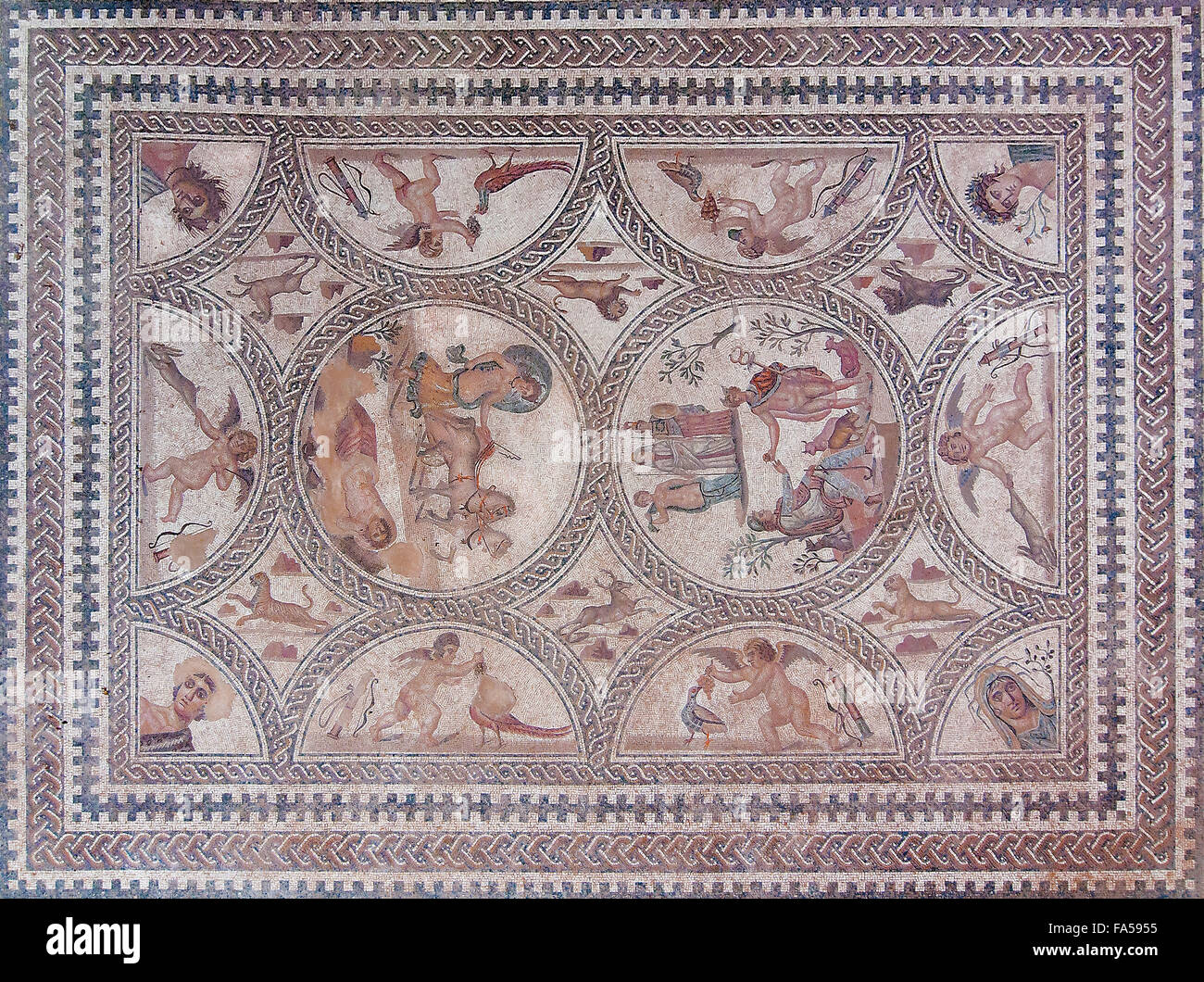 Roman Iberian city of Castulo, Mosaic of the loves, Linares, Jaen province, Region of Andalusia, Spain, Europe Stock Photohttps://www.alamy.com/image-license-details/?v=1https://www.alamy.com/stock-photo-roman-iberian-city-of-castulo-mosaic-of-the-loves-linares-jaen-province-92315361.html
Roman Iberian city of Castulo, Mosaic of the loves, Linares, Jaen province, Region of Andalusia, Spain, Europe Stock Photohttps://www.alamy.com/image-license-details/?v=1https://www.alamy.com/stock-photo-roman-iberian-city-of-castulo-mosaic-of-the-loves-linares-jaen-province-92315361.htmlRMFA5955–Roman Iberian city of Castulo, Mosaic of the loves, Linares, Jaen province, Region of Andalusia, Spain, Europe
 The golden Apple of Kalissta Greek goddess of disorder and confusion dsca 3864 Stock Photohttps://www.alamy.com/image-license-details/?v=1https://www.alamy.com/the-golden-apple-of-kalissta-greek-goddess-of-disorder-and-confusion-image3998378.html
The golden Apple of Kalissta Greek goddess of disorder and confusion dsca 3864 Stock Photohttps://www.alamy.com/image-license-details/?v=1https://www.alamy.com/the-golden-apple-of-kalissta-greek-goddess-of-disorder-and-confusion-image3998378.htmlRMA94JAB–The golden Apple of Kalissta Greek goddess of disorder and confusion dsca 3864
 Illustration of the greek ancient goddess Eris, seating, with the apple of the discord and chaos, reason of the trojan war. Hand drawn doodle. Stock Photohttps://www.alamy.com/image-license-details/?v=1https://www.alamy.com/illustration-of-the-greek-ancient-goddess-eris-seating-with-the-apple-of-the-discord-and-chaos-reason-of-the-trojan-war-hand-drawn-doodle-image616885262.html
Illustration of the greek ancient goddess Eris, seating, with the apple of the discord and chaos, reason of the trojan war. Hand drawn doodle. Stock Photohttps://www.alamy.com/image-license-details/?v=1https://www.alamy.com/illustration-of-the-greek-ancient-goddess-eris-seating-with-the-apple-of-the-discord-and-chaos-reason-of-the-trojan-war-hand-drawn-doodle-image616885262.htmlRF2XRHFCE–Illustration of the greek ancient goddess Eris, seating, with the apple of the discord and chaos, reason of the trojan war. Hand drawn doodle.
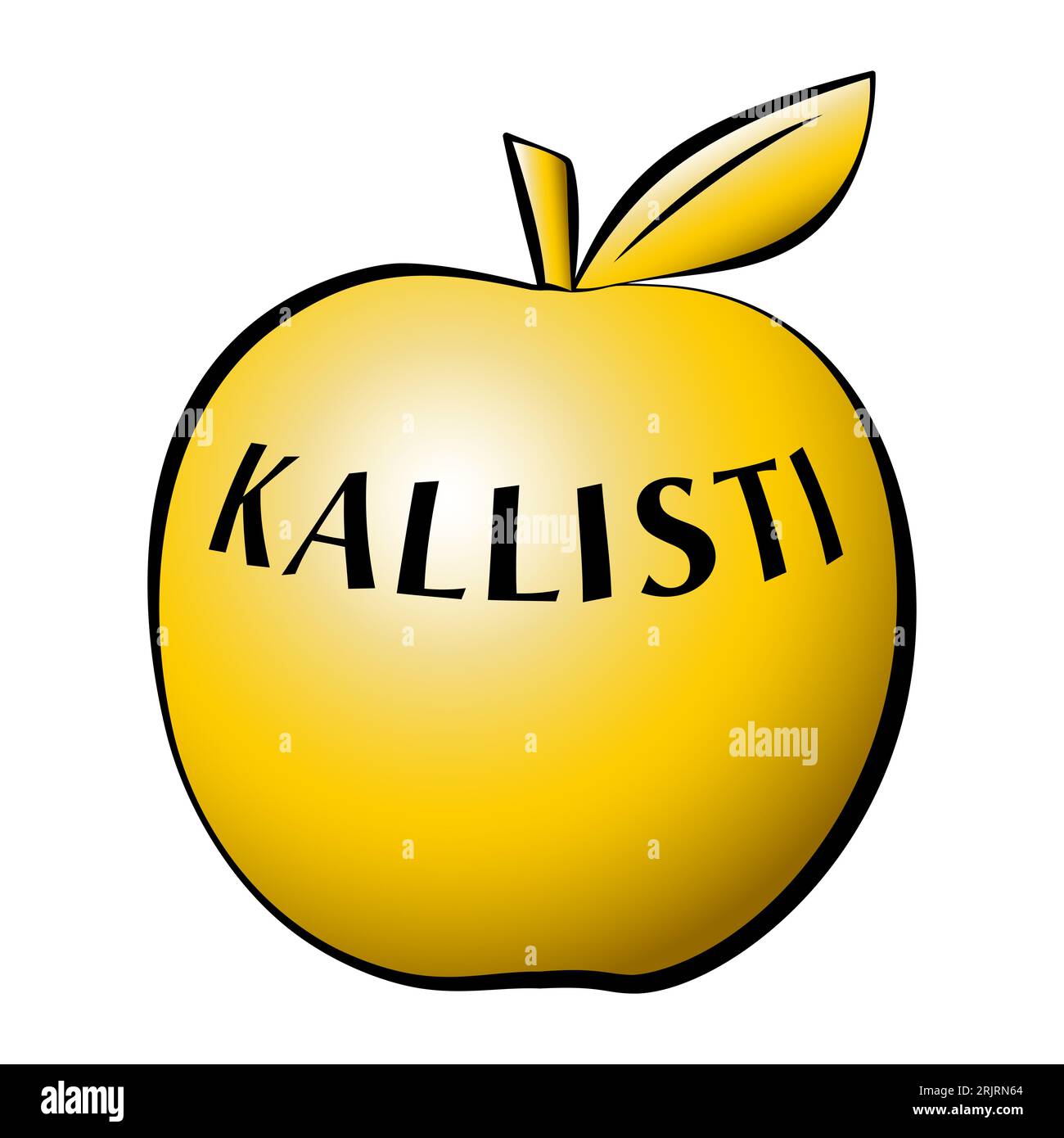 Golden Apple of Discord, inscribed with KALLISTI (to the most beautiful), dropped by Eris, Greek goddess of strife, sparking a vanity-fueled dispute. Stock Photohttps://www.alamy.com/image-license-details/?v=1https://www.alamy.com/golden-apple-of-discord-inscribed-with-kallisti-to-the-most-beautiful-dropped-by-eris-greek-goddess-of-strife-sparking-a-vanity-fueled-dispute-image562317116.html
Golden Apple of Discord, inscribed with KALLISTI (to the most beautiful), dropped by Eris, Greek goddess of strife, sparking a vanity-fueled dispute. Stock Photohttps://www.alamy.com/image-license-details/?v=1https://www.alamy.com/golden-apple-of-discord-inscribed-with-kallisti-to-the-most-beautiful-dropped-by-eris-greek-goddess-of-strife-sparking-a-vanity-fueled-dispute-image562317116.htmlRF2RJRN64–Golden Apple of Discord, inscribed with KALLISTI (to the most beautiful), dropped by Eris, Greek goddess of strife, sparking a vanity-fueled dispute.
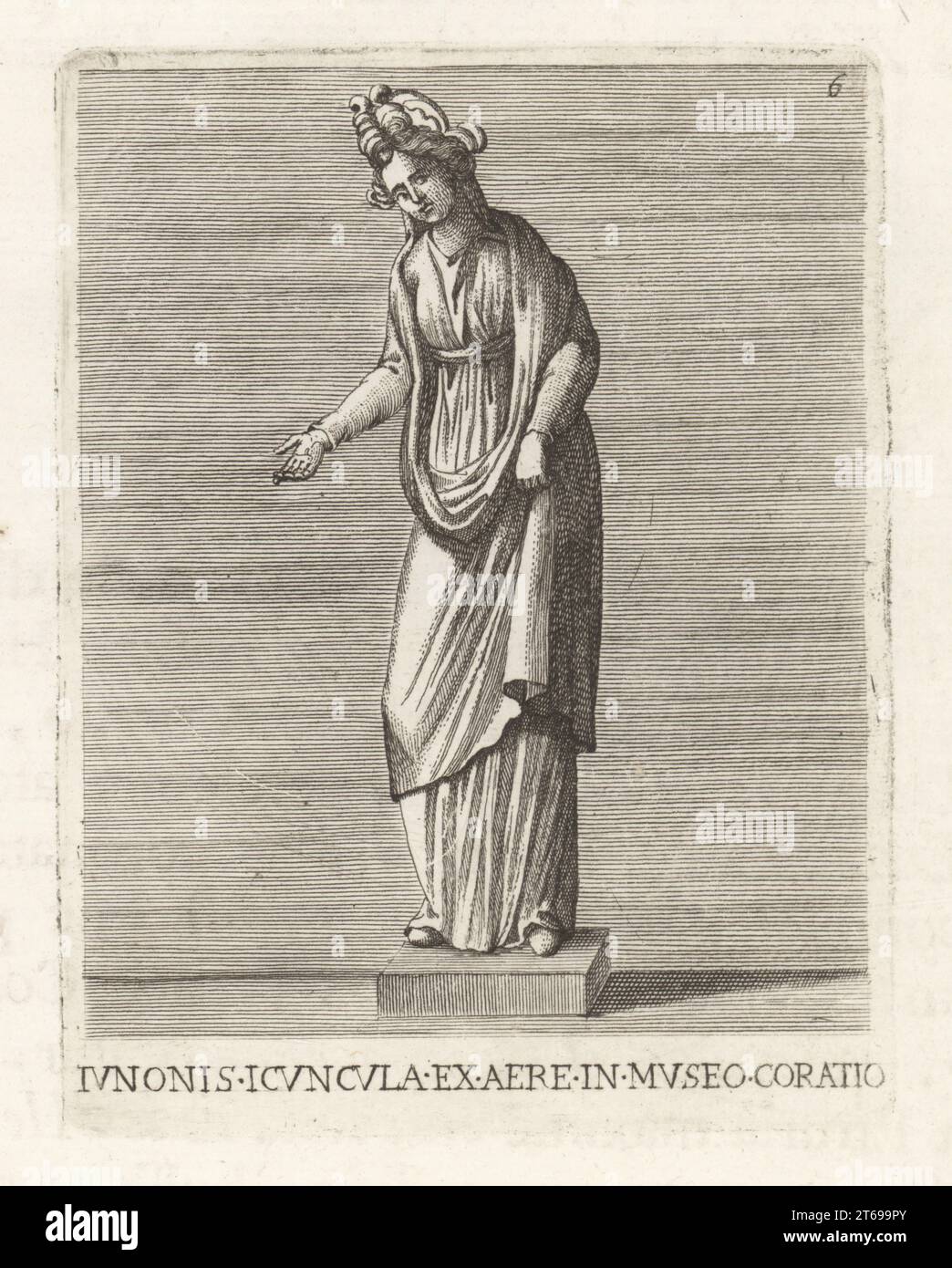 Bronze figure of a goddess in diadem and robe, found in the villa of Tadeus Orselli of Cortona. Possibly Roman Juno, in Etruscan religion Uni or Eris, goddess of marriage, fertility, family. Phoenician Astarte, Greek Hera. Iunonis Icuncula ex aere in Museo Coratio. Copperplate engraving from Francesco Valesio, Antonio Gori and Ridolfino Venutis Academia Etrusca, Museum Cortonense in quo Vetera Monumenta, (Etruscan Academy or Museum of Cortona), Faustus Amideus, Rome, 1750. Stock Photohttps://www.alamy.com/image-license-details/?v=1https://www.alamy.com/bronze-figure-of-a-goddess-in-diadem-and-robe-found-in-the-villa-of-tadeus-orselli-of-cortona-possibly-roman-juno-in-etruscan-religion-uni-or-eris-goddess-of-marriage-fertility-family-phoenician-astarte-greek-hera-iunonis-icuncula-ex-aere-in-museo-coratio-copperplate-engraving-from-francesco-valesio-antonio-gori-and-ridolfino-venutis-academia-etrusca-museum-cortonense-in-quo-vetera-monumenta-etruscan-academy-or-museum-of-cortona-faustus-amideus-rome-1750-image571835347.html
Bronze figure of a goddess in diadem and robe, found in the villa of Tadeus Orselli of Cortona. Possibly Roman Juno, in Etruscan religion Uni or Eris, goddess of marriage, fertility, family. Phoenician Astarte, Greek Hera. Iunonis Icuncula ex aere in Museo Coratio. Copperplate engraving from Francesco Valesio, Antonio Gori and Ridolfino Venutis Academia Etrusca, Museum Cortonense in quo Vetera Monumenta, (Etruscan Academy or Museum of Cortona), Faustus Amideus, Rome, 1750. Stock Photohttps://www.alamy.com/image-license-details/?v=1https://www.alamy.com/bronze-figure-of-a-goddess-in-diadem-and-robe-found-in-the-villa-of-tadeus-orselli-of-cortona-possibly-roman-juno-in-etruscan-religion-uni-or-eris-goddess-of-marriage-fertility-family-phoenician-astarte-greek-hera-iunonis-icuncula-ex-aere-in-museo-coratio-copperplate-engraving-from-francesco-valesio-antonio-gori-and-ridolfino-venutis-academia-etrusca-museum-cortonense-in-quo-vetera-monumenta-etruscan-academy-or-museum-of-cortona-faustus-amideus-rome-1750-image571835347.htmlRM2T699PY–Bronze figure of a goddess in diadem and robe, found in the villa of Tadeus Orselli of Cortona. Possibly Roman Juno, in Etruscan religion Uni or Eris, goddess of marriage, fertility, family. Phoenician Astarte, Greek Hera. Iunonis Icuncula ex aere in Museo Coratio. Copperplate engraving from Francesco Valesio, Antonio Gori and Ridolfino Venutis Academia Etrusca, Museum Cortonense in quo Vetera Monumenta, (Etruscan Academy or Museum of Cortona), Faustus Amideus, Rome, 1750.
 Golden apple, element and symbol in folk legends and fairy tales, for example the Golden Apple of Discord of the Greek goddess Eris. Stock Photohttps://www.alamy.com/image-license-details/?v=1https://www.alamy.com/golden-apple-element-and-symbol-in-folk-legends-and-fairy-tales-for-example-the-golden-apple-of-discord-of-the-greek-goddess-eris-image561995394.html
Golden apple, element and symbol in folk legends and fairy tales, for example the Golden Apple of Discord of the Greek goddess Eris. Stock Photohttps://www.alamy.com/image-license-details/?v=1https://www.alamy.com/golden-apple-element-and-symbol-in-folk-legends-and-fairy-tales-for-example-the-golden-apple-of-discord-of-the-greek-goddess-eris-image561995394.htmlRF2RJ92T2–Golden apple, element and symbol in folk legends and fairy tales, for example the Golden Apple of Discord of the Greek goddess Eris.
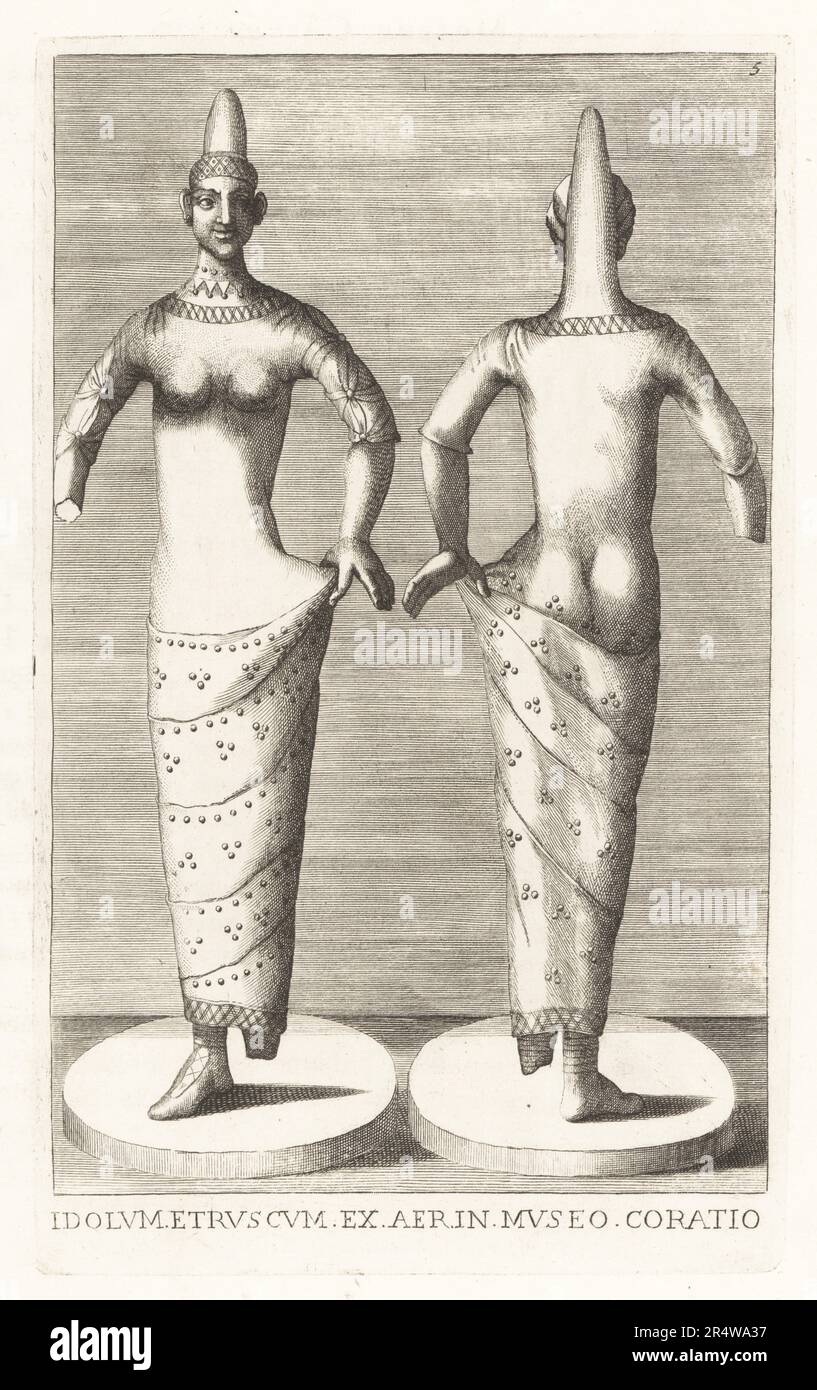 Bronze figure of Juno from Tuscany, the oldest in antiquity. In headdress, tunic with collar, sleeves and decorated skirt, beautiful shoes. Uni or Eris in Etruscan religion, goddess of marriage, fertility, family, and women. Found in Trasimeno, near Perugia, now in the Museum of the Knights of the Order of Saint Stephen. Idolum Etruscum ex aer in Museo Coratio. Copperplate engraving from Francesco Valesio, Antonio Gori and Ridolfino Venuti’s Academia Etrusca, Museum Cortonense in quo Vetera Monumenta, (Etruscan Academy or Museum of Cortona), Faustus Amideus, Rome, 1750. Stock Photohttps://www.alamy.com/image-license-details/?v=1https://www.alamy.com/bronze-figure-of-juno-from-tuscany-the-oldest-in-antiquity-in-headdress-tunic-with-collar-sleeves-and-decorated-skirt-beautiful-shoes-uni-or-eris-in-etruscan-religion-goddess-of-marriage-fertility-family-and-women-found-in-trasimeno-near-perugia-now-in-the-museum-of-the-knights-of-the-order-of-saint-stephen-idolum-etruscum-ex-aer-in-museo-coratio-copperplate-engraving-from-francesco-valesio-antonio-gori-and-ridolfino-venutis-academia-etrusca-museum-cortonense-in-quo-vetera-monumenta-etruscan-academy-or-museum-of-cortona-faustus-amideus-rome-1750-image553747131.html
Bronze figure of Juno from Tuscany, the oldest in antiquity. In headdress, tunic with collar, sleeves and decorated skirt, beautiful shoes. Uni or Eris in Etruscan religion, goddess of marriage, fertility, family, and women. Found in Trasimeno, near Perugia, now in the Museum of the Knights of the Order of Saint Stephen. Idolum Etruscum ex aer in Museo Coratio. Copperplate engraving from Francesco Valesio, Antonio Gori and Ridolfino Venuti’s Academia Etrusca, Museum Cortonense in quo Vetera Monumenta, (Etruscan Academy or Museum of Cortona), Faustus Amideus, Rome, 1750. Stock Photohttps://www.alamy.com/image-license-details/?v=1https://www.alamy.com/bronze-figure-of-juno-from-tuscany-the-oldest-in-antiquity-in-headdress-tunic-with-collar-sleeves-and-decorated-skirt-beautiful-shoes-uni-or-eris-in-etruscan-religion-goddess-of-marriage-fertility-family-and-women-found-in-trasimeno-near-perugia-now-in-the-museum-of-the-knights-of-the-order-of-saint-stephen-idolum-etruscum-ex-aer-in-museo-coratio-copperplate-engraving-from-francesco-valesio-antonio-gori-and-ridolfino-venutis-academia-etrusca-museum-cortonense-in-quo-vetera-monumenta-etruscan-academy-or-museum-of-cortona-faustus-amideus-rome-1750-image553747131.htmlRM2R4WA37–Bronze figure of Juno from Tuscany, the oldest in antiquity. In headdress, tunic with collar, sleeves and decorated skirt, beautiful shoes. Uni or Eris in Etruscan religion, goddess of marriage, fertility, family, and women. Found in Trasimeno, near Perugia, now in the Museum of the Knights of the Order of Saint Stephen. Idolum Etruscum ex aer in Museo Coratio. Copperplate engraving from Francesco Valesio, Antonio Gori and Ridolfino Venuti’s Academia Etrusca, Museum Cortonense in quo Vetera Monumenta, (Etruscan Academy or Museum of Cortona), Faustus Amideus, Rome, 1750.
 Bride and groom with deities from an Etruscan pottery urn. The winged woman with sword possibly Discordia or one of the Furies, the winged man in animal-skin hood with hammer possibly the Genius of Jealousy. Urna Etrusca Fictilis in Museo March Devenutis. Copperplate engraving from Francesco Valesio, Antonio Gori and Ridolfino Venuti’s Academia Etrusca, Museum Cortonense in quo Vetera Monumenta, (Etruscan Academy or Museum of Cortona), Faustus Amideus, Rome, 1750. Stock Photohttps://www.alamy.com/image-license-details/?v=1https://www.alamy.com/bride-and-groom-with-deities-from-an-etruscan-pottery-urn-the-winged-woman-with-sword-possibly-discordia-or-one-of-the-furies-the-winged-man-in-animal-skin-hood-with-hammer-possibly-the-genius-of-jealousy-urna-etrusca-fictilis-in-museo-march-devenutis-copperplate-engraving-from-francesco-valesio-antonio-gori-and-ridolfino-venutis-academia-etrusca-museum-cortonense-in-quo-vetera-monumenta-etruscan-academy-or-museum-of-cortona-faustus-amideus-rome-1750-image554024133.html
Bride and groom with deities from an Etruscan pottery urn. The winged woman with sword possibly Discordia or one of the Furies, the winged man in animal-skin hood with hammer possibly the Genius of Jealousy. Urna Etrusca Fictilis in Museo March Devenutis. Copperplate engraving from Francesco Valesio, Antonio Gori and Ridolfino Venuti’s Academia Etrusca, Museum Cortonense in quo Vetera Monumenta, (Etruscan Academy or Museum of Cortona), Faustus Amideus, Rome, 1750. Stock Photohttps://www.alamy.com/image-license-details/?v=1https://www.alamy.com/bride-and-groom-with-deities-from-an-etruscan-pottery-urn-the-winged-woman-with-sword-possibly-discordia-or-one-of-the-furies-the-winged-man-in-animal-skin-hood-with-hammer-possibly-the-genius-of-jealousy-urna-etrusca-fictilis-in-museo-march-devenutis-copperplate-engraving-from-francesco-valesio-antonio-gori-and-ridolfino-venutis-academia-etrusca-museum-cortonense-in-quo-vetera-monumenta-etruscan-academy-or-museum-of-cortona-faustus-amideus-rome-1750-image554024133.htmlRM2R59YC5–Bride and groom with deities from an Etruscan pottery urn. The winged woman with sword possibly Discordia or one of the Furies, the winged man in animal-skin hood with hammer possibly the Genius of Jealousy. Urna Etrusca Fictilis in Museo March Devenutis. Copperplate engraving from Francesco Valesio, Antonio Gori and Ridolfino Venuti’s Academia Etrusca, Museum Cortonense in quo Vetera Monumenta, (Etruscan Academy or Museum of Cortona), Faustus Amideus, Rome, 1750.
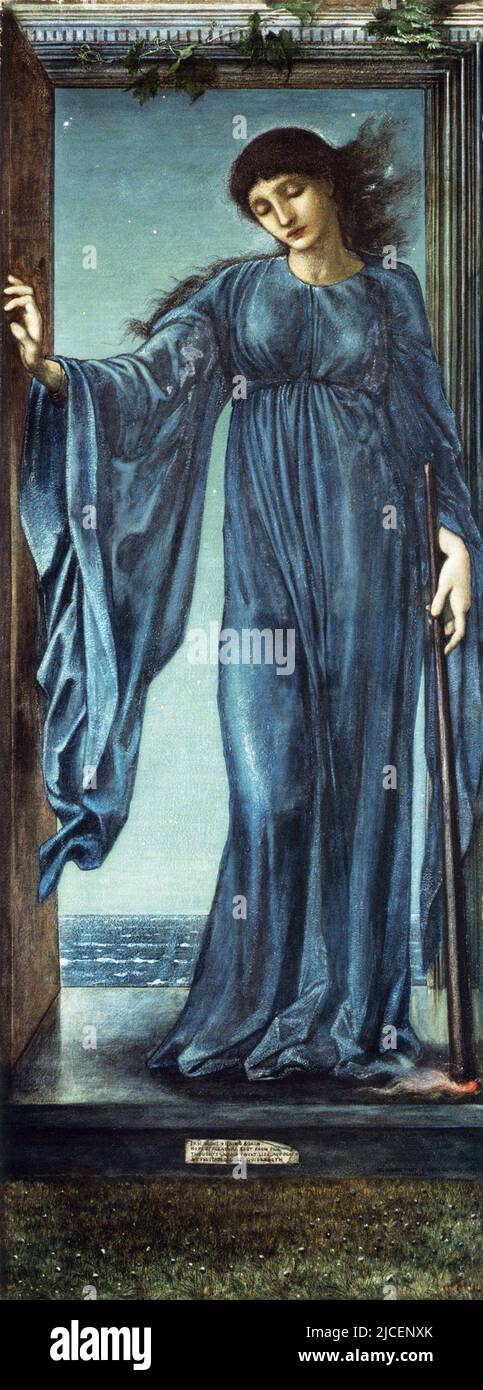 A portrait of Nyx (The Night) by Edward Burne Jones (1833-1898). In Greek mythology Nyx was one of the primordial godesses created from Chaos. She mates with Erebus (Darkness) to give birth to Aether (LIght) and Hemera (Day). Later she gives birth to Moros (Doom, Destiny), the Keres (Destruction, Death), Thanatos (Death), Hypnos (Sleep), the Oneiroi (Dreams), Momus (Blame), Oizys (Pain, Distress), the Hesperides, the Moirai (Fates), Nemesis (Indignation, Retribution), Apate (Deceit), Philotes (Friendship), Geras (Old Age), and Eris (Strife) Stock Photohttps://www.alamy.com/image-license-details/?v=1https://www.alamy.com/a-portrait-of-nyx-the-night-by-edward-burne-jones-1833-1898-in-greek-mythology-nyx-was-one-of-the-primordial-godesses-created-from-chaos-she-mates-with-erebus-darkness-to-give-birth-to-aether-light-and-hemera-day-later-she-gives-birth-to-moros-doom-destiny-the-keres-destruction-death-thanatos-death-hypnos-sleep-the-oneiroi-dreams-momus-blame-oizys-pain-distress-the-hesperides-the-moirai-fates-nemesis-indignation-retribution-apate-deceit-philotes-friendship-geras-old-age-and-eris-strife-image472380347.html
A portrait of Nyx (The Night) by Edward Burne Jones (1833-1898). In Greek mythology Nyx was one of the primordial godesses created from Chaos. She mates with Erebus (Darkness) to give birth to Aether (LIght) and Hemera (Day). Later she gives birth to Moros (Doom, Destiny), the Keres (Destruction, Death), Thanatos (Death), Hypnos (Sleep), the Oneiroi (Dreams), Momus (Blame), Oizys (Pain, Distress), the Hesperides, the Moirai (Fates), Nemesis (Indignation, Retribution), Apate (Deceit), Philotes (Friendship), Geras (Old Age), and Eris (Strife) Stock Photohttps://www.alamy.com/image-license-details/?v=1https://www.alamy.com/a-portrait-of-nyx-the-night-by-edward-burne-jones-1833-1898-in-greek-mythology-nyx-was-one-of-the-primordial-godesses-created-from-chaos-she-mates-with-erebus-darkness-to-give-birth-to-aether-light-and-hemera-day-later-she-gives-birth-to-moros-doom-destiny-the-keres-destruction-death-thanatos-death-hypnos-sleep-the-oneiroi-dreams-momus-blame-oizys-pain-distress-the-hesperides-the-moirai-fates-nemesis-indignation-retribution-apate-deceit-philotes-friendship-geras-old-age-and-eris-strife-image472380347.htmlRM2JCENXK–A portrait of Nyx (The Night) by Edward Burne Jones (1833-1898). In Greek mythology Nyx was one of the primordial godesses created from Chaos. She mates with Erebus (Darkness) to give birth to Aether (LIght) and Hemera (Day). Later she gives birth to Moros (Doom, Destiny), the Keres (Destruction, Death), Thanatos (Death), Hypnos (Sleep), the Oneiroi (Dreams), Momus (Blame), Oizys (Pain, Distress), the Hesperides, the Moirai (Fates), Nemesis (Indignation, Retribution), Apate (Deceit), Philotes (Friendship), Geras (Old Age), and Eris (Strife)
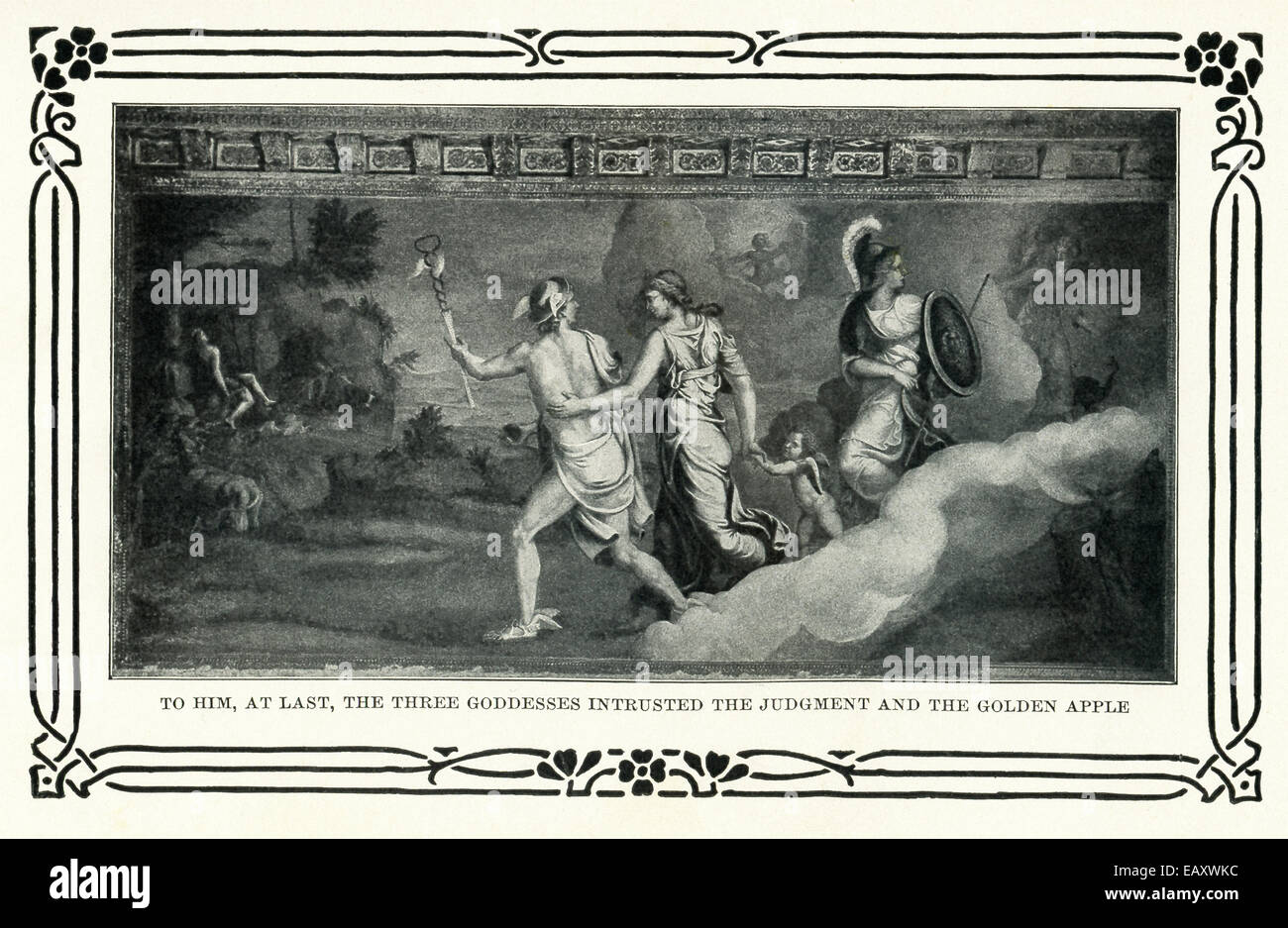 The text that accompanied this illustration reads: To him, at last, the three goddesses entrusted the judgment and the golden apple and the person entrusted is the god Hermes. Stock Photohttps://www.alamy.com/image-license-details/?v=1https://www.alamy.com/stock-photo-the-text-that-accompanied-this-illustration-reads-to-him-at-last-the-75578928.html
The text that accompanied this illustration reads: To him, at last, the three goddesses entrusted the judgment and the golden apple and the person entrusted is the god Hermes. Stock Photohttps://www.alamy.com/image-license-details/?v=1https://www.alamy.com/stock-photo-the-text-that-accompanied-this-illustration-reads-to-him-at-last-the-75578928.htmlRMEAXWKC–The text that accompanied this illustration reads: To him, at last, the three goddesses entrusted the judgment and the golden apple and the person entrusted is the god Hermes.
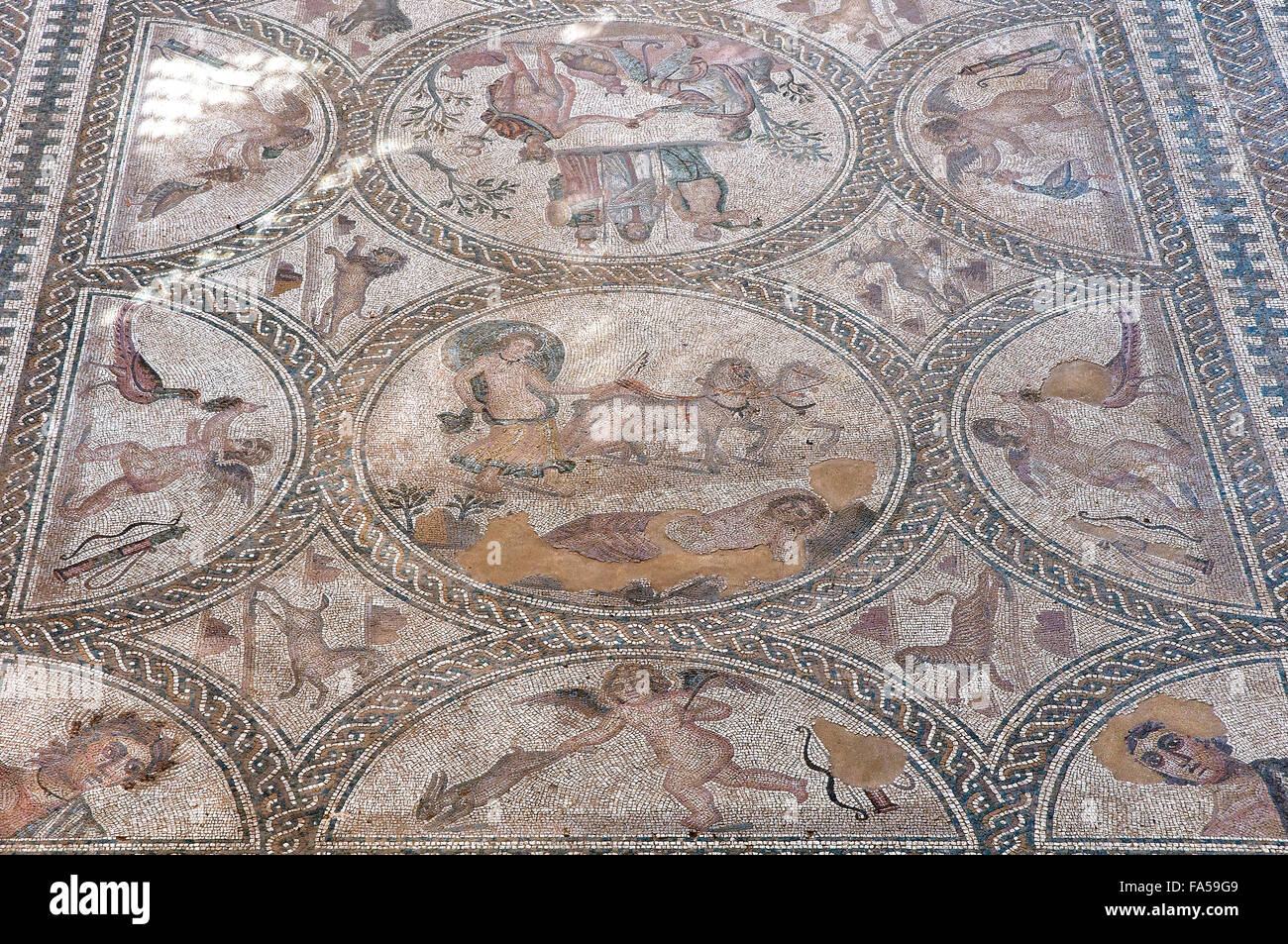 Roman Iberian city of Castulo, Mosaic of the loves - detail, Linares, Jaen province, Region of Andalusia, Spain, Europe Stock Photohttps://www.alamy.com/image-license-details/?v=1https://www.alamy.com/stock-photo-roman-iberian-city-of-castulo-mosaic-of-the-loves-detail-linares-jaen-92315673.html
Roman Iberian city of Castulo, Mosaic of the loves - detail, Linares, Jaen province, Region of Andalusia, Spain, Europe Stock Photohttps://www.alamy.com/image-license-details/?v=1https://www.alamy.com/stock-photo-roman-iberian-city-of-castulo-mosaic-of-the-loves-detail-linares-jaen-92315673.htmlRMFA59G9–Roman Iberian city of Castulo, Mosaic of the loves - detail, Linares, Jaen province, Region of Andalusia, Spain, Europe
 The golden Apple of Kalissta Greek goddess of disorder and confusion dsca 3861 Stock Photohttps://www.alamy.com/image-license-details/?v=1https://www.alamy.com/the-golden-apple-of-kalissta-greek-goddess-of-disorder-and-confusion-image3998373.html
The golden Apple of Kalissta Greek goddess of disorder and confusion dsca 3861 Stock Photohttps://www.alamy.com/image-license-details/?v=1https://www.alamy.com/the-golden-apple-of-kalissta-greek-goddess-of-disorder-and-confusion-image3998373.htmlRMA94JA6–The golden Apple of Kalissta Greek goddess of disorder and confusion dsca 3861
 Bronze figure of Juno from Tuscany, the oldest in antiquity. In headdress, tunic with collar, sleeves and decorated skirt, beautiful shoes. Uni or Eris in Etruscan religion, goddess of marriage, fertility, family, and women. Found in Trasimeno, near Perugia, now in the Museum of the Knights of the Order of Saint Stephen. Idolum Etruscum ex aer in Museo Coratio. Copperplate engraving from Francesco Valesio, Antonio Gori and Ridolfino Venutis Academia Etrusca, Museum Cortonense in quo Vetera Monumenta, (Etruscan Academy or Museum of Cortona), Faustus Amideus, Rome, 1750. Stock Photohttps://www.alamy.com/image-license-details/?v=1https://www.alamy.com/bronze-figure-of-juno-from-tuscany-the-oldest-in-antiquity-in-headdress-tunic-with-collar-sleeves-and-decorated-skirt-beautiful-shoes-uni-or-eris-in-etruscan-religion-goddess-of-marriage-fertility-family-and-women-found-in-trasimeno-near-perugia-now-in-the-museum-of-the-knights-of-the-order-of-saint-stephen-idolum-etruscum-ex-aer-in-museo-coratio-copperplate-engraving-from-francesco-valesio-antonio-gori-and-ridolfino-venutis-academia-etrusca-museum-cortonense-in-quo-vetera-monumenta-etruscan-academy-or-museum-of-cortona-faustus-amideus-rome-1750-image571849065.html
Bronze figure of Juno from Tuscany, the oldest in antiquity. In headdress, tunic with collar, sleeves and decorated skirt, beautiful shoes. Uni or Eris in Etruscan religion, goddess of marriage, fertility, family, and women. Found in Trasimeno, near Perugia, now in the Museum of the Knights of the Order of Saint Stephen. Idolum Etruscum ex aer in Museo Coratio. Copperplate engraving from Francesco Valesio, Antonio Gori and Ridolfino Venutis Academia Etrusca, Museum Cortonense in quo Vetera Monumenta, (Etruscan Academy or Museum of Cortona), Faustus Amideus, Rome, 1750. Stock Photohttps://www.alamy.com/image-license-details/?v=1https://www.alamy.com/bronze-figure-of-juno-from-tuscany-the-oldest-in-antiquity-in-headdress-tunic-with-collar-sleeves-and-decorated-skirt-beautiful-shoes-uni-or-eris-in-etruscan-religion-goddess-of-marriage-fertility-family-and-women-found-in-trasimeno-near-perugia-now-in-the-museum-of-the-knights-of-the-order-of-saint-stephen-idolum-etruscum-ex-aer-in-museo-coratio-copperplate-engraving-from-francesco-valesio-antonio-gori-and-ridolfino-venutis-academia-etrusca-museum-cortonense-in-quo-vetera-monumenta-etruscan-academy-or-museum-of-cortona-faustus-amideus-rome-1750-image571849065.htmlRM2T69Y8W–Bronze figure of Juno from Tuscany, the oldest in antiquity. In headdress, tunic with collar, sleeves and decorated skirt, beautiful shoes. Uni or Eris in Etruscan religion, goddess of marriage, fertility, family, and women. Found in Trasimeno, near Perugia, now in the Museum of the Knights of the Order of Saint Stephen. Idolum Etruscum ex aer in Museo Coratio. Copperplate engraving from Francesco Valesio, Antonio Gori and Ridolfino Venutis Academia Etrusca, Museum Cortonense in quo Vetera Monumenta, (Etruscan Academy or Museum of Cortona), Faustus Amideus, Rome, 1750.
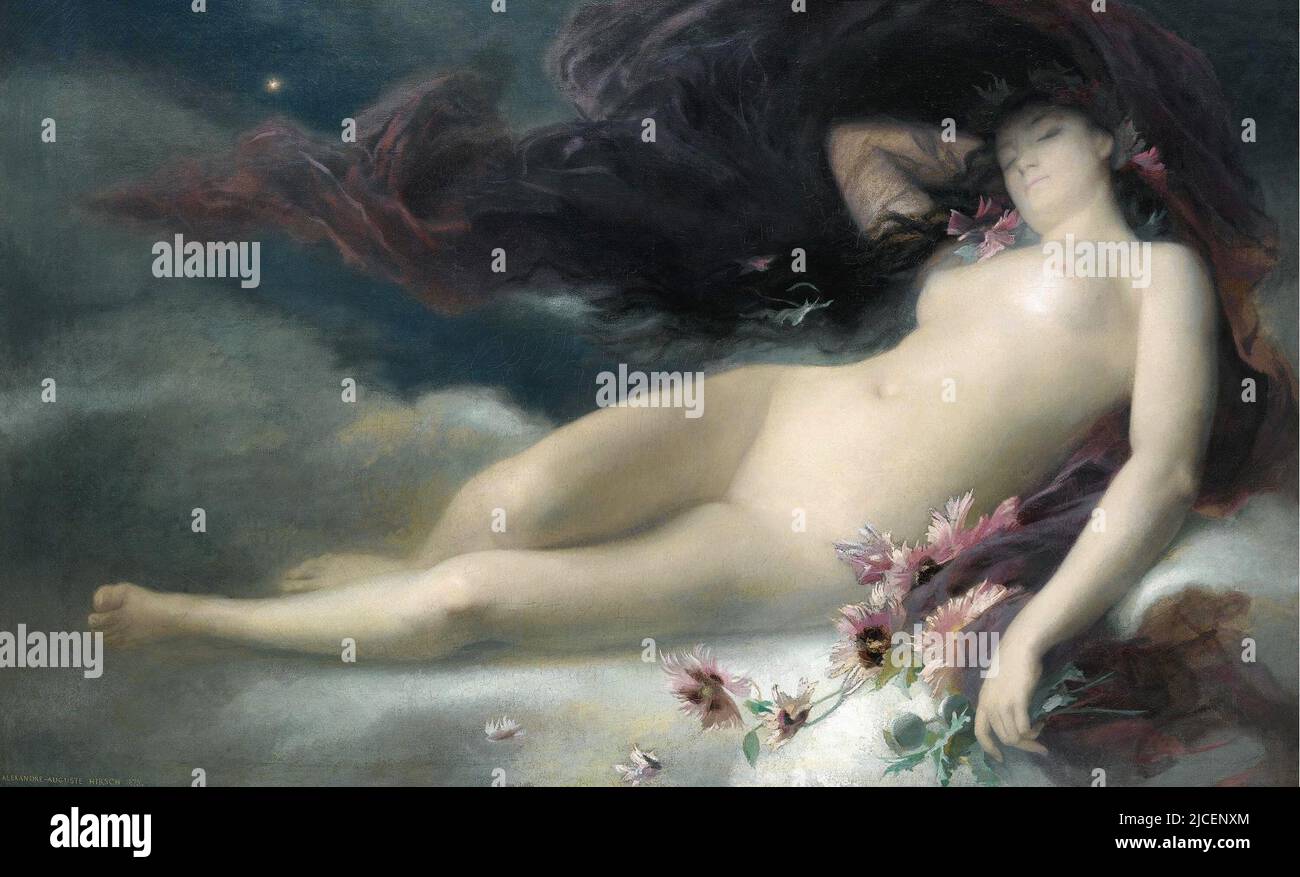 A portrait of Nyx (The Night) by Auguste Alexandre Hirsch (1833-1912). In Greek mythology Nyx was one of the primordial godesses created from Chaos. She mates with Erebus (Darkness) to give birth to Aether (LIght) and Hemera (Day). Later she gives birth to Moros (Doom, Destiny), the Keres (Destruction, Death), Thanatos (Death), Hypnos (Sleep), the Oneiroi (Dreams), Momus (Blame), Oizys (Pain, Distress), the Hesperides, the Moirai (Fates), Nemesis (Indignation, Retribution), Apate (Deceit), Philotes (Friendship), Geras (Old Age), and Eris (Strife) Stock Photohttps://www.alamy.com/image-license-details/?v=1https://www.alamy.com/a-portrait-of-nyx-the-night-by-auguste-alexandre-hirsch-1833-1912-in-greek-mythology-nyx-was-one-of-the-primordial-godesses-created-from-chaos-she-mates-with-erebus-darkness-to-give-birth-to-aether-light-and-hemera-day-later-she-gives-birth-to-moros-doom-destiny-the-keres-destruction-death-thanatos-death-hypnos-sleep-the-oneiroi-dreams-momus-blame-oizys-pain-distress-the-hesperides-the-moirai-fates-nemesis-indignation-retribution-apate-deceit-philotes-friendship-geras-old-age-and-eris-strife-image472380348.html
A portrait of Nyx (The Night) by Auguste Alexandre Hirsch (1833-1912). In Greek mythology Nyx was one of the primordial godesses created from Chaos. She mates with Erebus (Darkness) to give birth to Aether (LIght) and Hemera (Day). Later she gives birth to Moros (Doom, Destiny), the Keres (Destruction, Death), Thanatos (Death), Hypnos (Sleep), the Oneiroi (Dreams), Momus (Blame), Oizys (Pain, Distress), the Hesperides, the Moirai (Fates), Nemesis (Indignation, Retribution), Apate (Deceit), Philotes (Friendship), Geras (Old Age), and Eris (Strife) Stock Photohttps://www.alamy.com/image-license-details/?v=1https://www.alamy.com/a-portrait-of-nyx-the-night-by-auguste-alexandre-hirsch-1833-1912-in-greek-mythology-nyx-was-one-of-the-primordial-godesses-created-from-chaos-she-mates-with-erebus-darkness-to-give-birth-to-aether-light-and-hemera-day-later-she-gives-birth-to-moros-doom-destiny-the-keres-destruction-death-thanatos-death-hypnos-sleep-the-oneiroi-dreams-momus-blame-oizys-pain-distress-the-hesperides-the-moirai-fates-nemesis-indignation-retribution-apate-deceit-philotes-friendship-geras-old-age-and-eris-strife-image472380348.htmlRM2JCENXM–A portrait of Nyx (The Night) by Auguste Alexandre Hirsch (1833-1912). In Greek mythology Nyx was one of the primordial godesses created from Chaos. She mates with Erebus (Darkness) to give birth to Aether (LIght) and Hemera (Day). Later she gives birth to Moros (Doom, Destiny), the Keres (Destruction, Death), Thanatos (Death), Hypnos (Sleep), the Oneiroi (Dreams), Momus (Blame), Oizys (Pain, Distress), the Hesperides, the Moirai (Fates), Nemesis (Indignation, Retribution), Apate (Deceit), Philotes (Friendship), Geras (Old Age), and Eris (Strife)
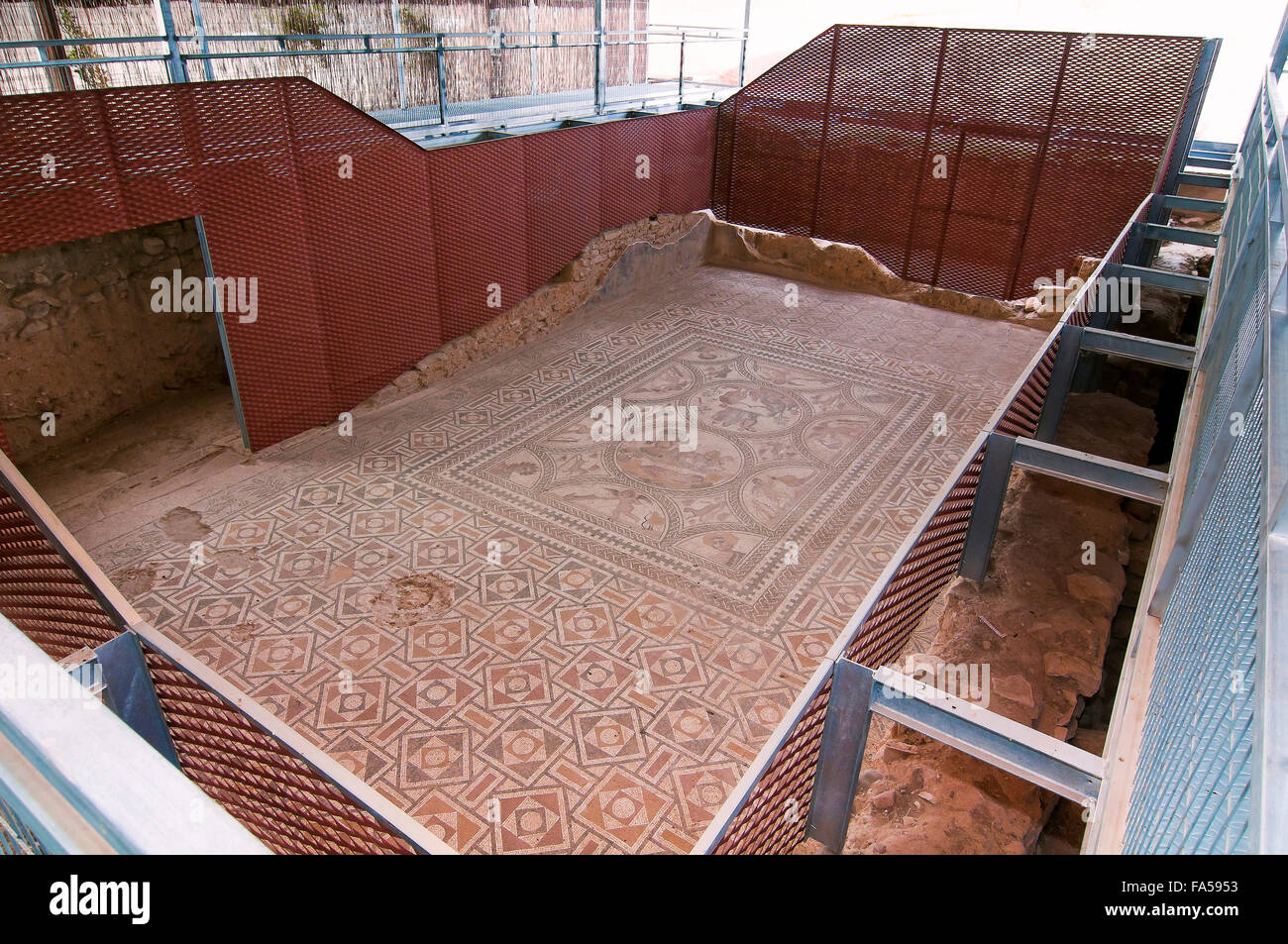 Roman Iberian city of Castulo, Mosaic of the loves, Linares, Jaen province, Region of Andalusia, Spain, Europe Stock Photohttps://www.alamy.com/image-license-details/?v=1https://www.alamy.com/stock-photo-roman-iberian-city-of-castulo-mosaic-of-the-loves-linares-jaen-province-92315359.html
Roman Iberian city of Castulo, Mosaic of the loves, Linares, Jaen province, Region of Andalusia, Spain, Europe Stock Photohttps://www.alamy.com/image-license-details/?v=1https://www.alamy.com/stock-photo-roman-iberian-city-of-castulo-mosaic-of-the-loves-linares-jaen-province-92315359.htmlRMFA5953–Roman Iberian city of Castulo, Mosaic of the loves, Linares, Jaen province, Region of Andalusia, Spain, Europe
 The golden Apple of Kalissta Greek goddess of disorder and confusion dsca 3866 Stock Photohttps://www.alamy.com/image-license-details/?v=1https://www.alamy.com/the-golden-apple-of-kalissta-greek-goddess-of-disorder-and-confusion-image3998382.html
The golden Apple of Kalissta Greek goddess of disorder and confusion dsca 3866 Stock Photohttps://www.alamy.com/image-license-details/?v=1https://www.alamy.com/the-golden-apple-of-kalissta-greek-goddess-of-disorder-and-confusion-image3998382.htmlRMA94JAF–The golden Apple of Kalissta Greek goddess of disorder and confusion dsca 3866
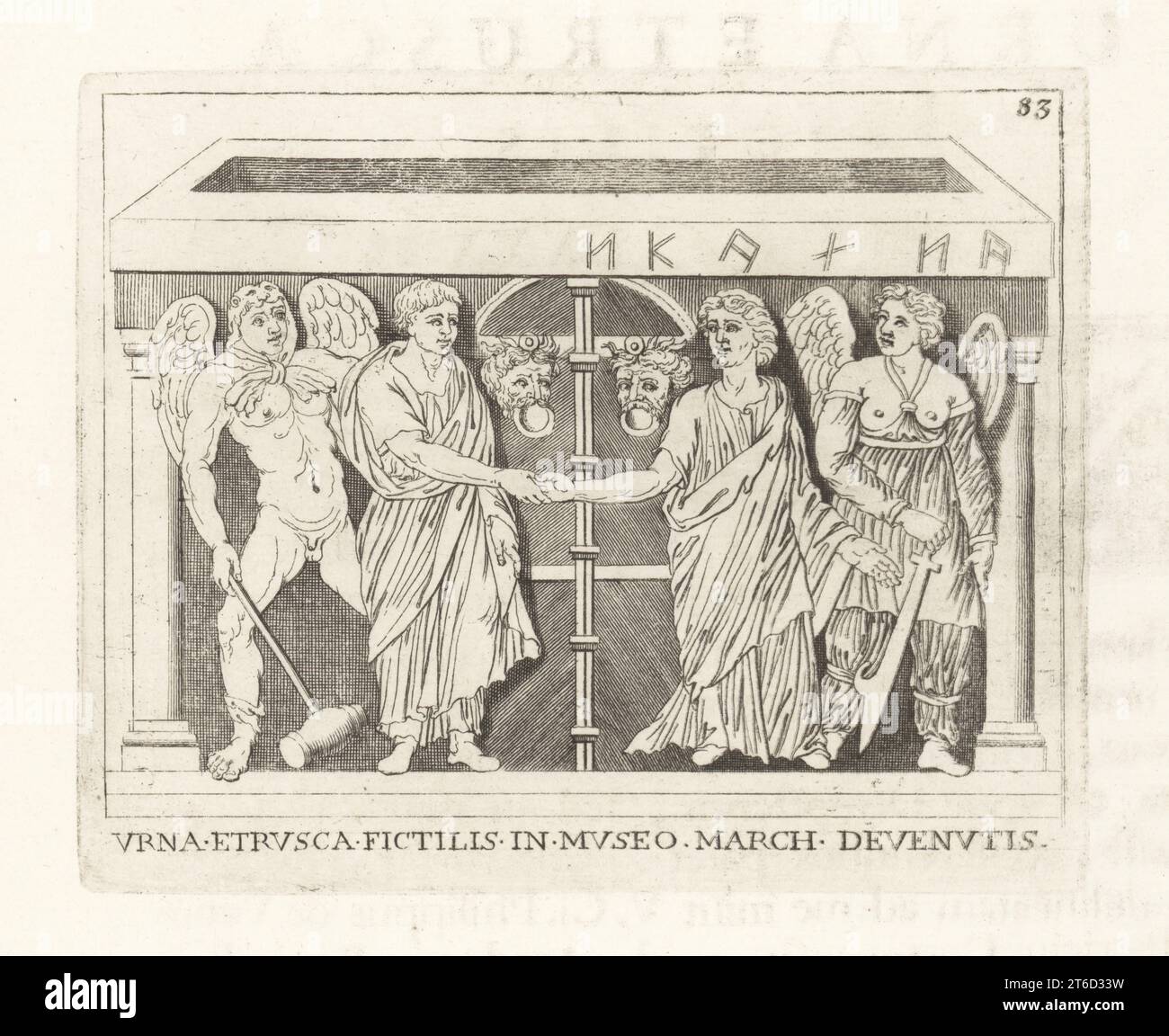 Bride and groom with deities from an Etruscan pottery urn. The winged woman with sword possibly Discordia or one of the Furies, the winged man in animal-skin hood with hammer possibly the Genius of Jealousy. Urna Etrusca Fictilis in Museo March Devenutis. Copperplate engraving from Francesco Valesio, Antonio Gori and Ridolfino Venutis Academia Etrusca, Museum Cortonense in quo Vetera Monumenta, (Etruscan Academy or Museum of Cortona), Faustus Amideus, Rome, 1750. Stock Photohttps://www.alamy.com/image-license-details/?v=1https://www.alamy.com/bride-and-groom-with-deities-from-an-etruscan-pottery-urn-the-winged-woman-with-sword-possibly-discordia-or-one-of-the-furies-the-winged-man-in-animal-skin-hood-with-hammer-possibly-the-genius-of-jealousy-urna-etrusca-fictilis-in-museo-march-devenutis-copperplate-engraving-from-francesco-valesio-antonio-gori-and-ridolfino-venutis-academia-etrusca-museum-cortonense-in-quo-vetera-monumenta-etruscan-academy-or-museum-of-cortona-faustus-amideus-rome-1750-image571917917.html
Bride and groom with deities from an Etruscan pottery urn. The winged woman with sword possibly Discordia or one of the Furies, the winged man in animal-skin hood with hammer possibly the Genius of Jealousy. Urna Etrusca Fictilis in Museo March Devenutis. Copperplate engraving from Francesco Valesio, Antonio Gori and Ridolfino Venutis Academia Etrusca, Museum Cortonense in quo Vetera Monumenta, (Etruscan Academy or Museum of Cortona), Faustus Amideus, Rome, 1750. Stock Photohttps://www.alamy.com/image-license-details/?v=1https://www.alamy.com/bride-and-groom-with-deities-from-an-etruscan-pottery-urn-the-winged-woman-with-sword-possibly-discordia-or-one-of-the-furies-the-winged-man-in-animal-skin-hood-with-hammer-possibly-the-genius-of-jealousy-urna-etrusca-fictilis-in-museo-march-devenutis-copperplate-engraving-from-francesco-valesio-antonio-gori-and-ridolfino-venutis-academia-etrusca-museum-cortonense-in-quo-vetera-monumenta-etruscan-academy-or-museum-of-cortona-faustus-amideus-rome-1750-image571917917.htmlRM2T6D33W–Bride and groom with deities from an Etruscan pottery urn. The winged woman with sword possibly Discordia or one of the Furies, the winged man in animal-skin hood with hammer possibly the Genius of Jealousy. Urna Etrusca Fictilis in Museo March Devenutis. Copperplate engraving from Francesco Valesio, Antonio Gori and Ridolfino Venutis Academia Etrusca, Museum Cortonense in quo Vetera Monumenta, (Etruscan Academy or Museum of Cortona), Faustus Amideus, Rome, 1750.
 Roman Iberian city of Castulo, Mosaic of the loves, Linares, Jaen province, Region of Andalusia, Spain, Europe. Stock Photohttps://www.alamy.com/image-license-details/?v=1https://www.alamy.com/roman-iberian-city-of-castulo-mosaic-of-the-loves-linares-jaen-province-region-of-andalusia-spain-europe-image337332881.html
Roman Iberian city of Castulo, Mosaic of the loves, Linares, Jaen province, Region of Andalusia, Spain, Europe. Stock Photohttps://www.alamy.com/image-license-details/?v=1https://www.alamy.com/roman-iberian-city-of-castulo-mosaic-of-the-loves-linares-jaen-province-region-of-andalusia-spain-europe-image337332881.htmlRM2AGPREW–Roman Iberian city of Castulo, Mosaic of the loves, Linares, Jaen province, Region of Andalusia, Spain, Europe.
 Roman Iberian city of Castulo, Mosaic of the loves - detail, Linares, Jaen province, Region of Andalusia, Spain, Europe. Stock Photohttps://www.alamy.com/image-license-details/?v=1https://www.alamy.com/roman-iberian-city-of-castulo-mosaic-of-the-loves-detail-linares-jaen-province-region-of-andalusia-spain-europe-image337332930.html
Roman Iberian city of Castulo, Mosaic of the loves - detail, Linares, Jaen province, Region of Andalusia, Spain, Europe. Stock Photohttps://www.alamy.com/image-license-details/?v=1https://www.alamy.com/roman-iberian-city-of-castulo-mosaic-of-the-loves-detail-linares-jaen-province-region-of-andalusia-spain-europe-image337332930.htmlRM2AGPRGJ–Roman Iberian city of Castulo, Mosaic of the loves - detail, Linares, Jaen province, Region of Andalusia, Spain, Europe.